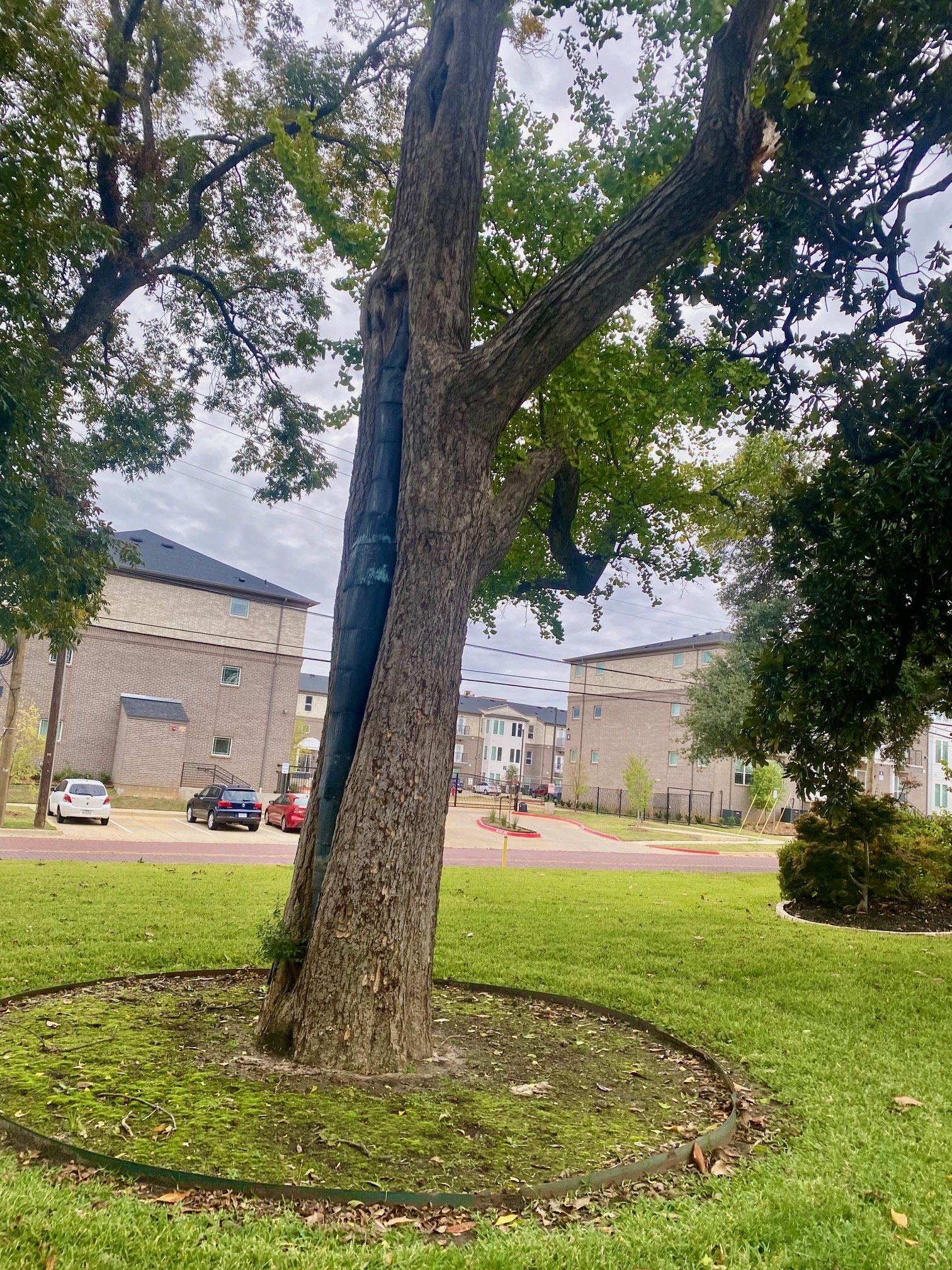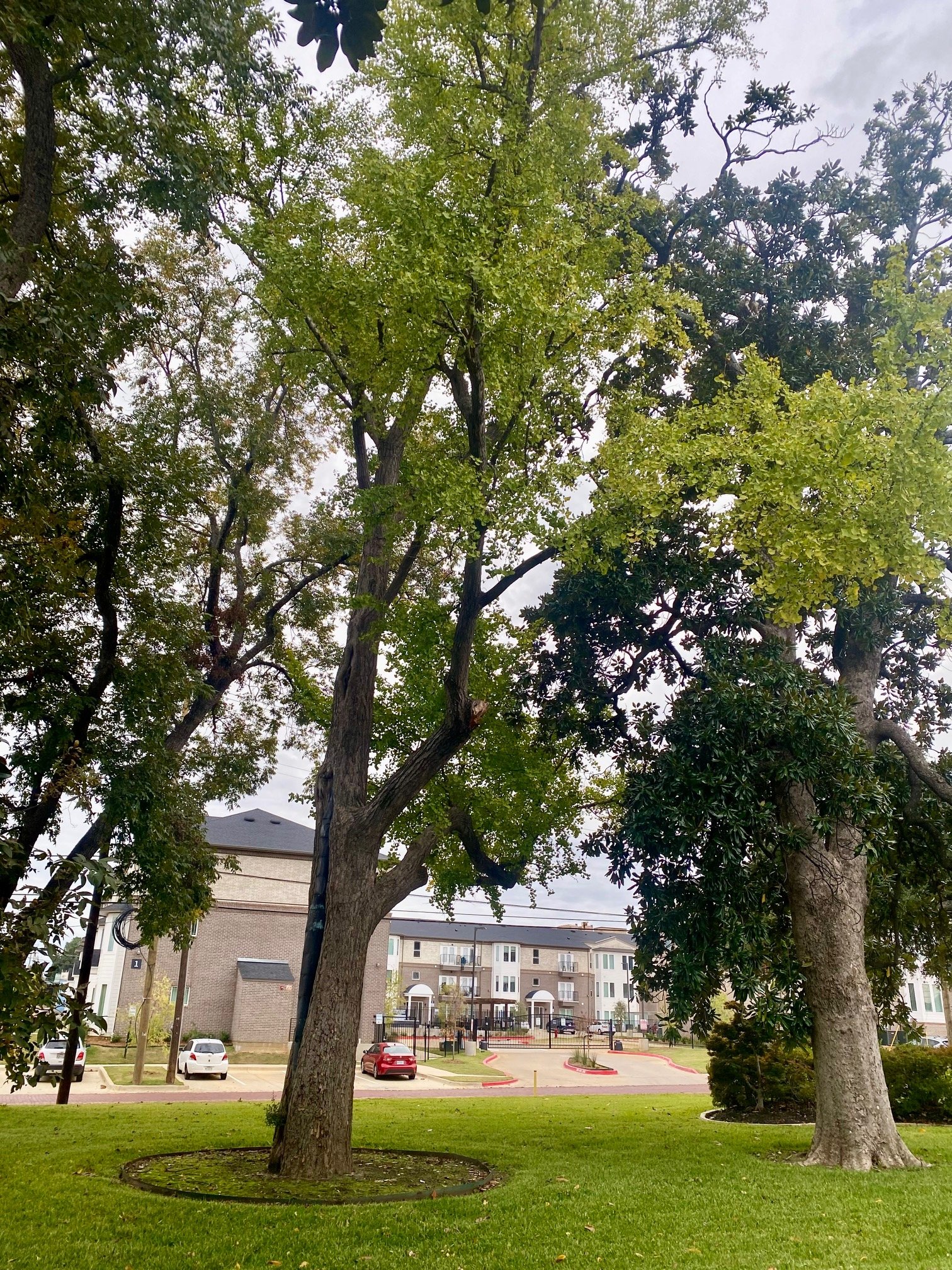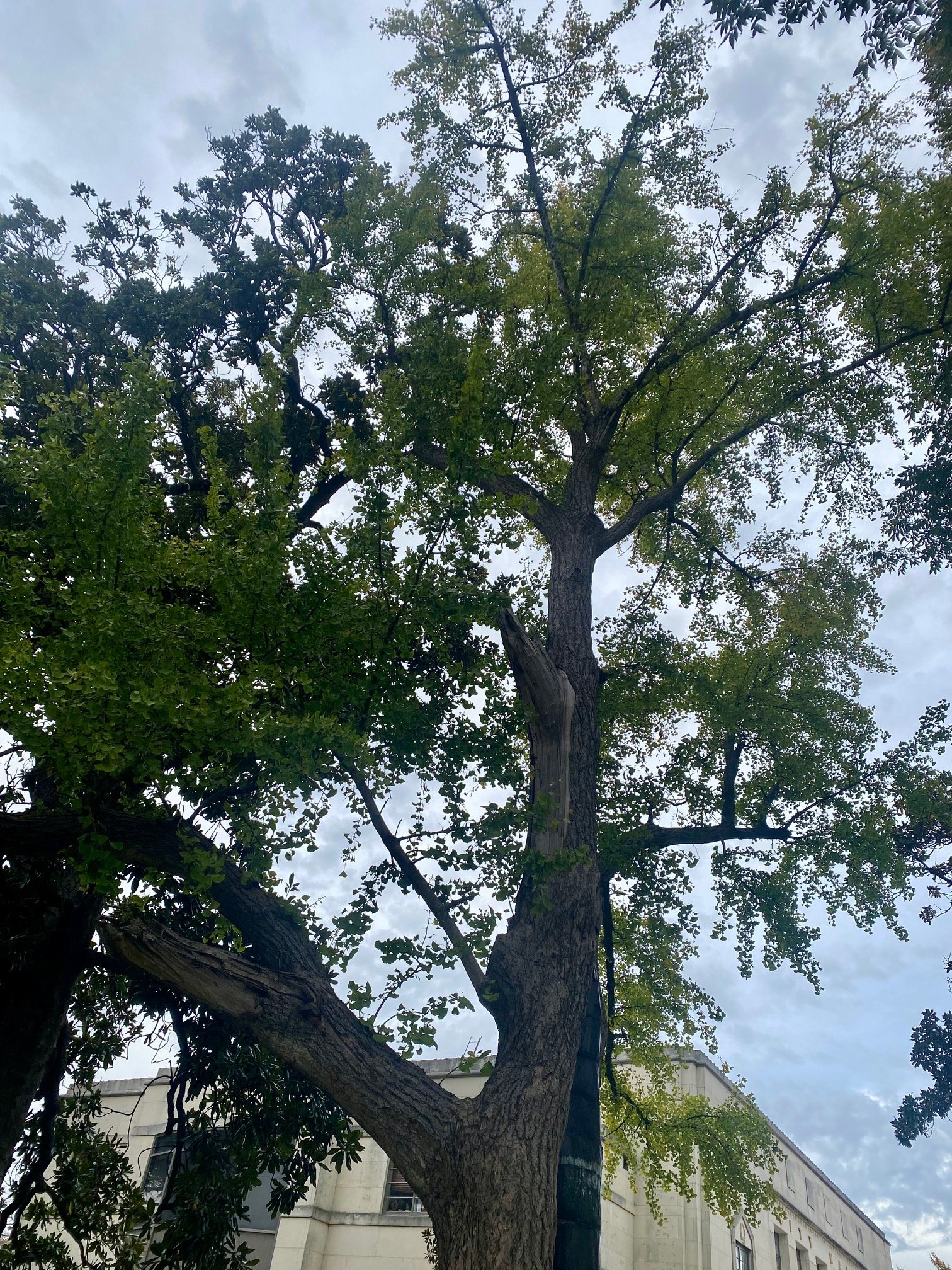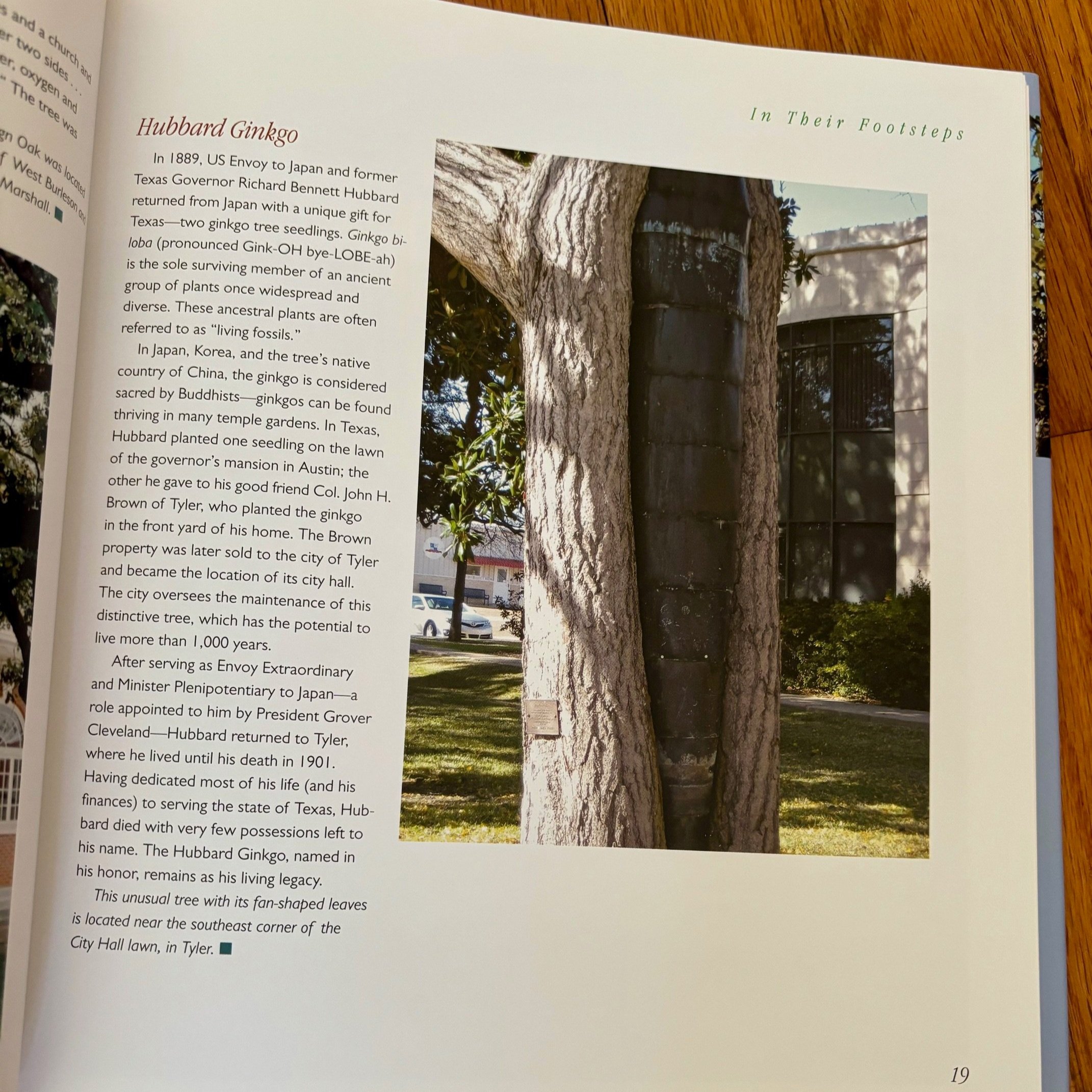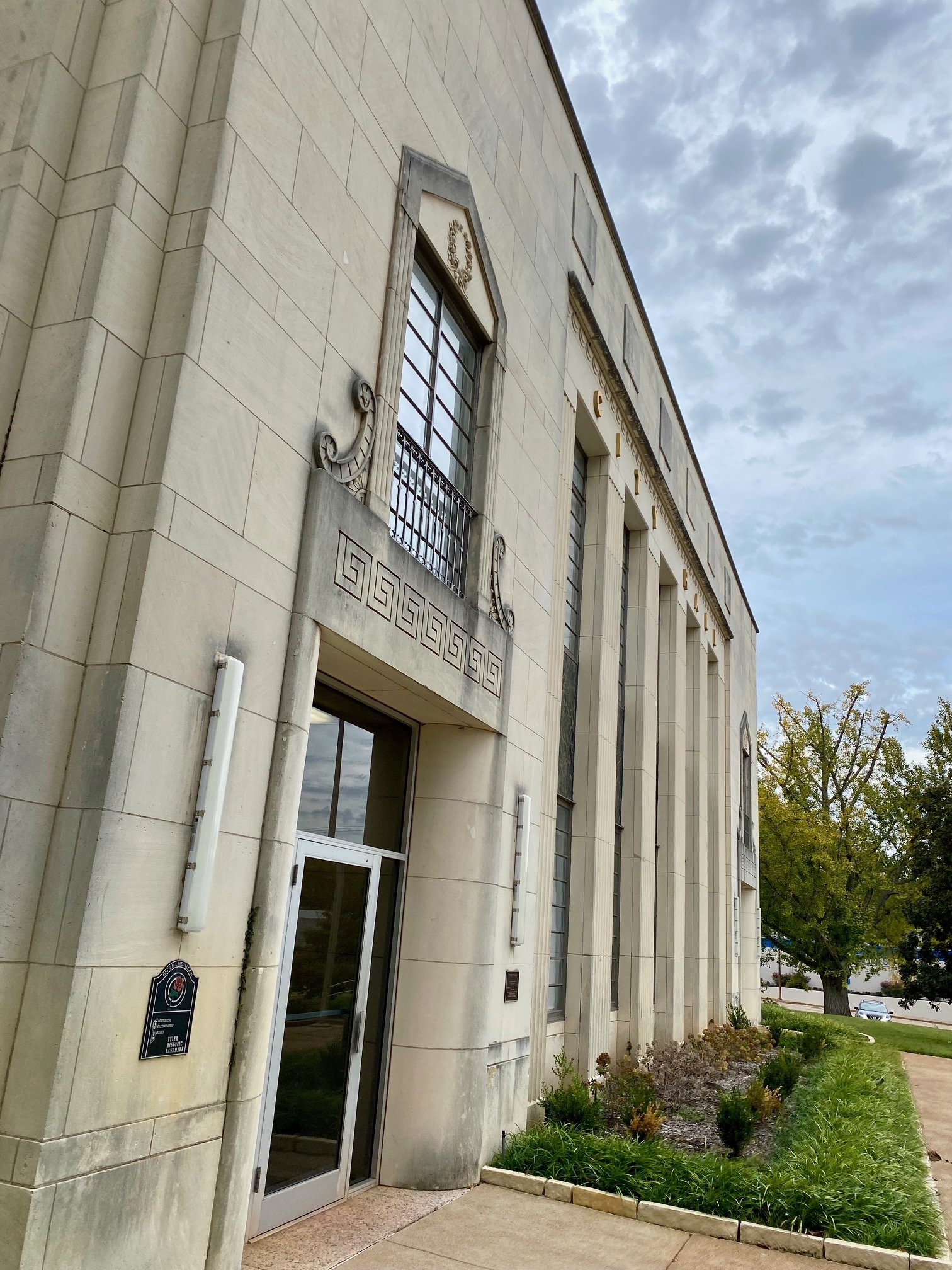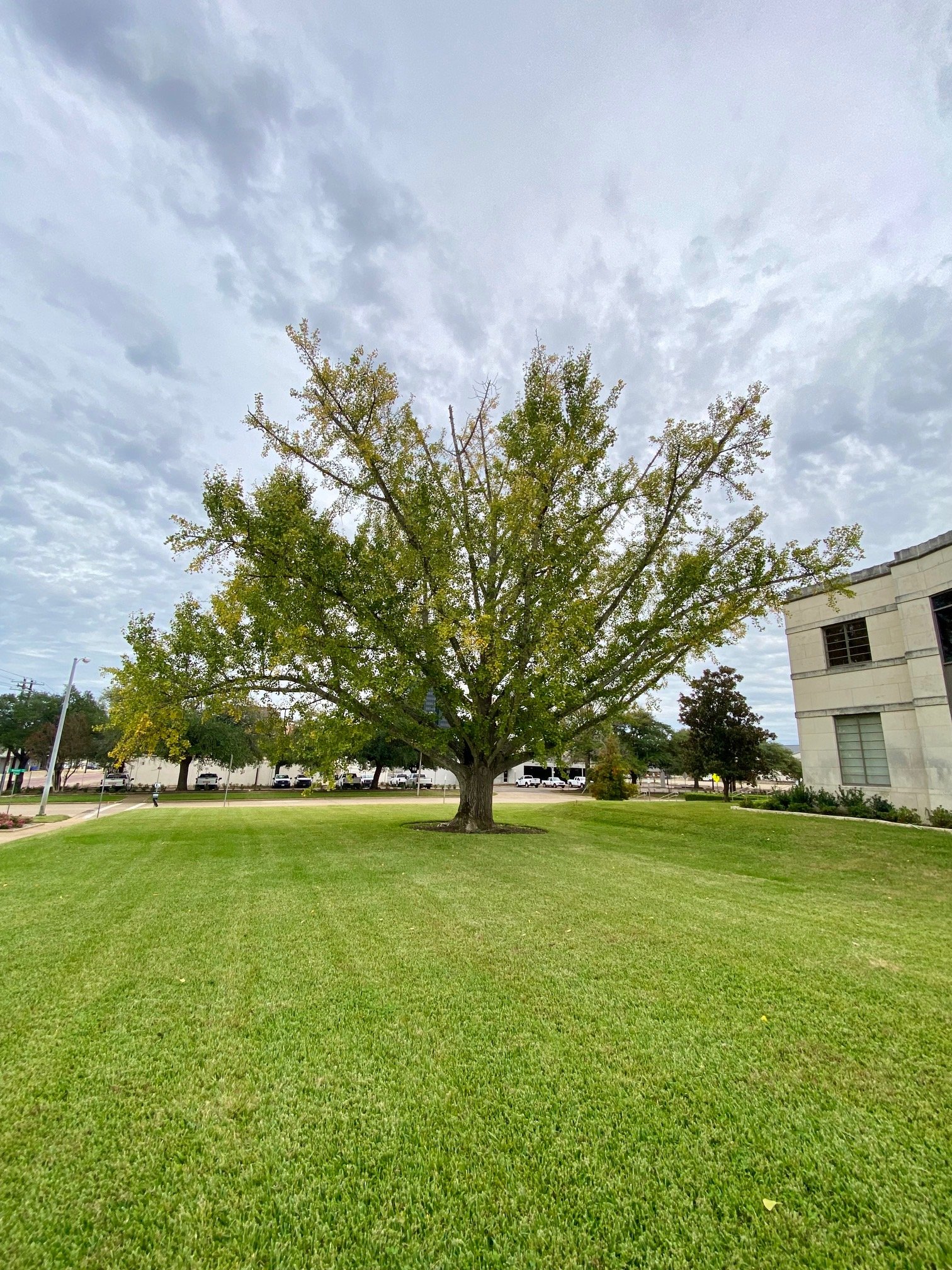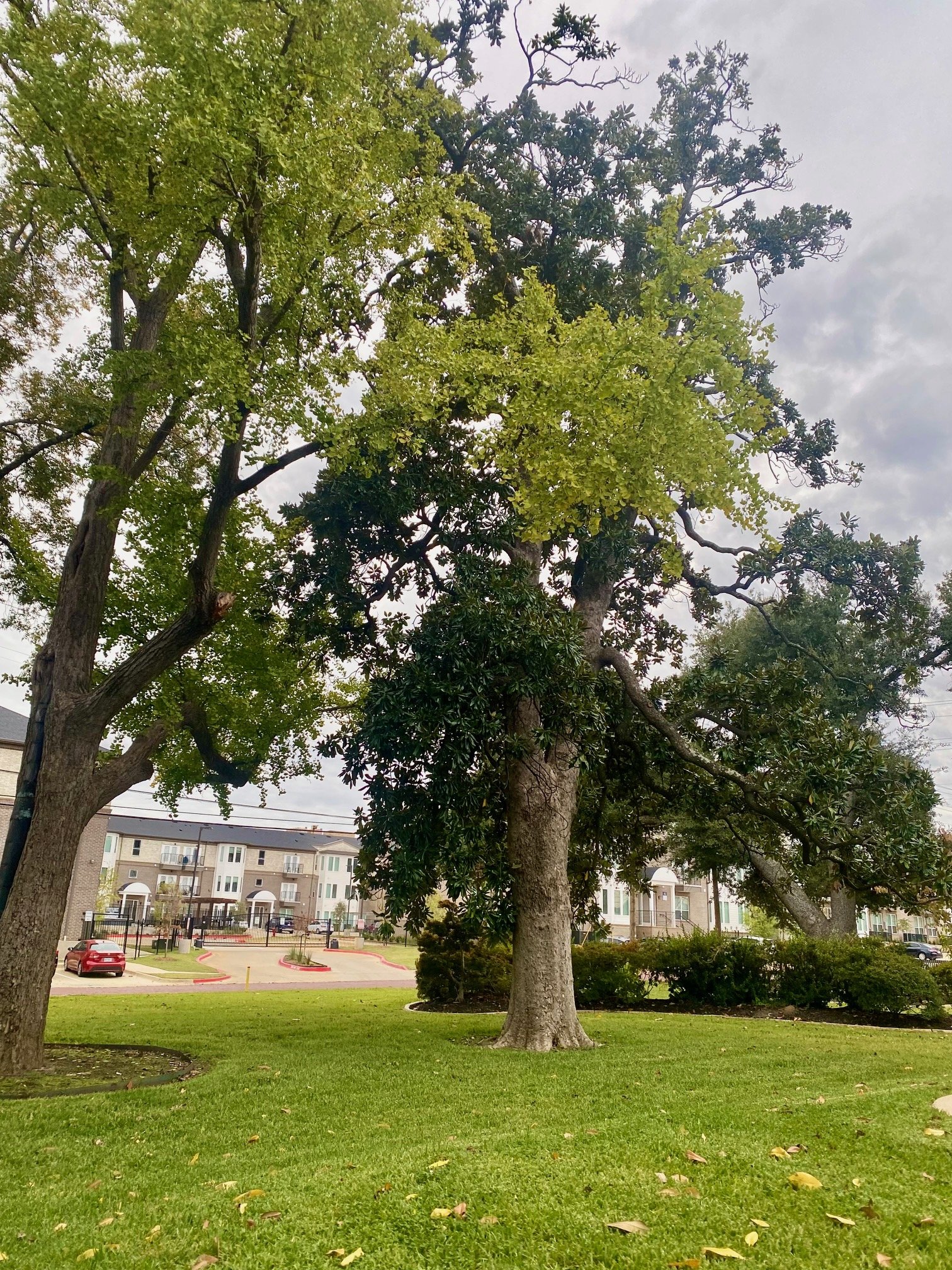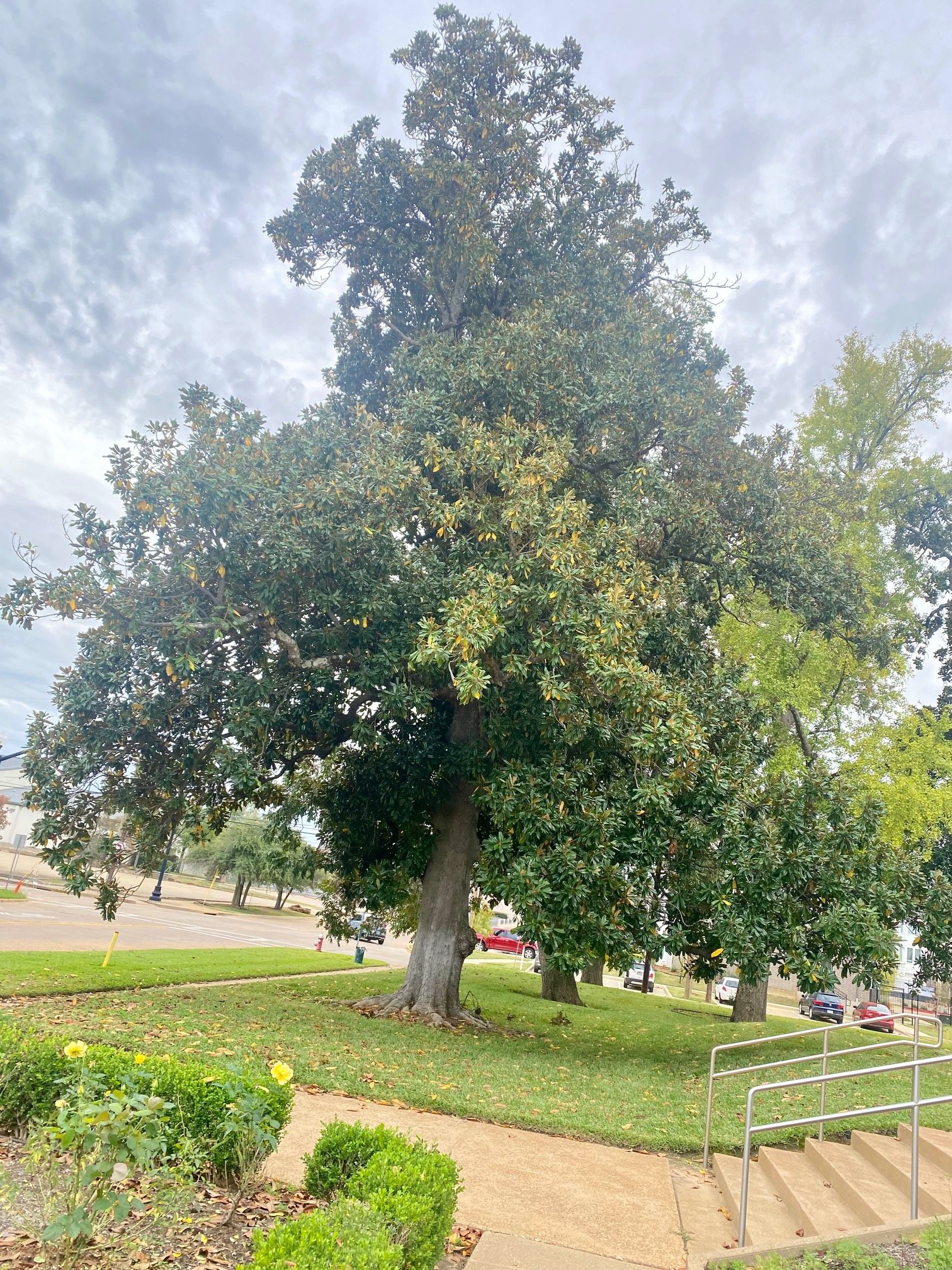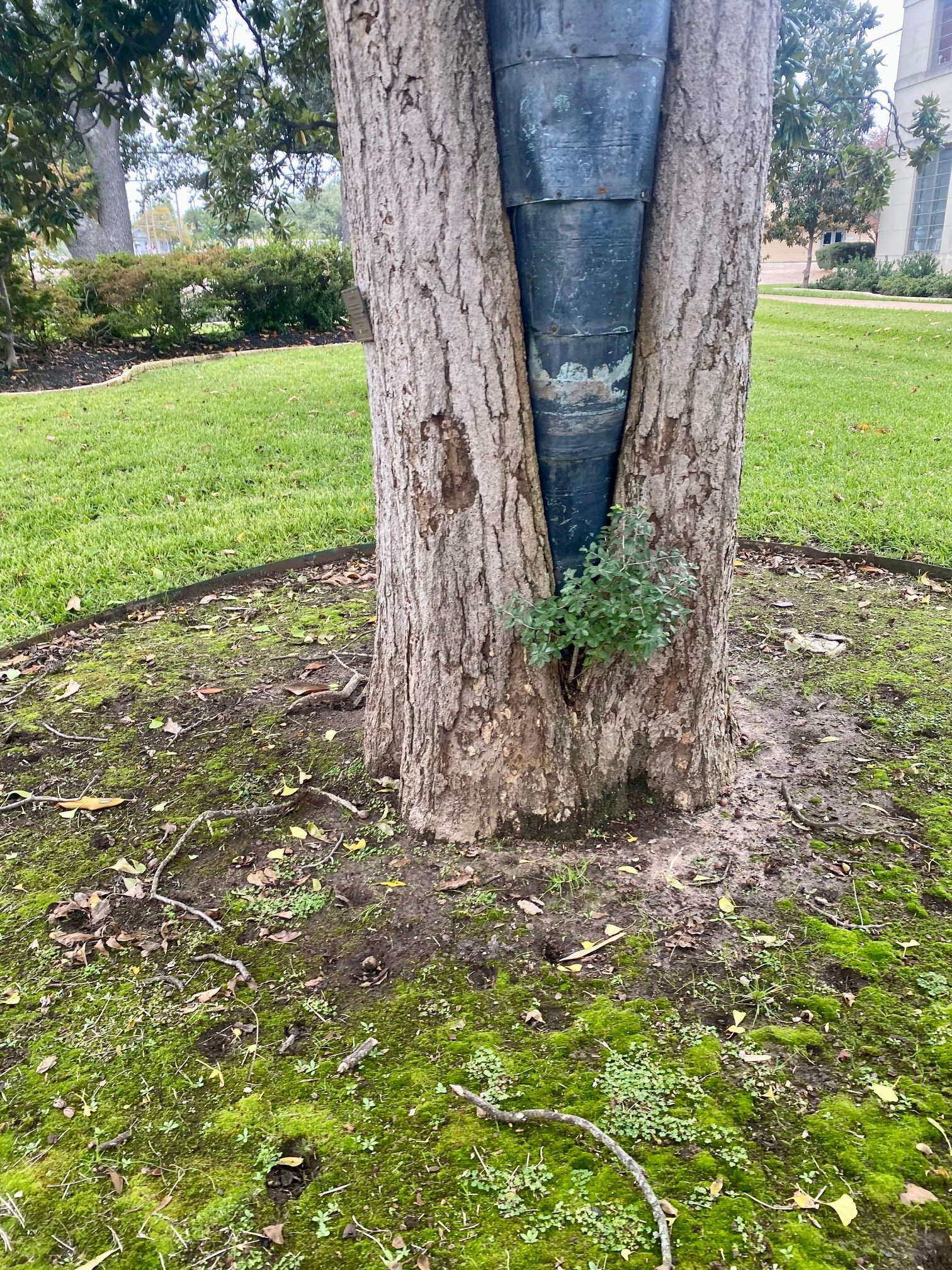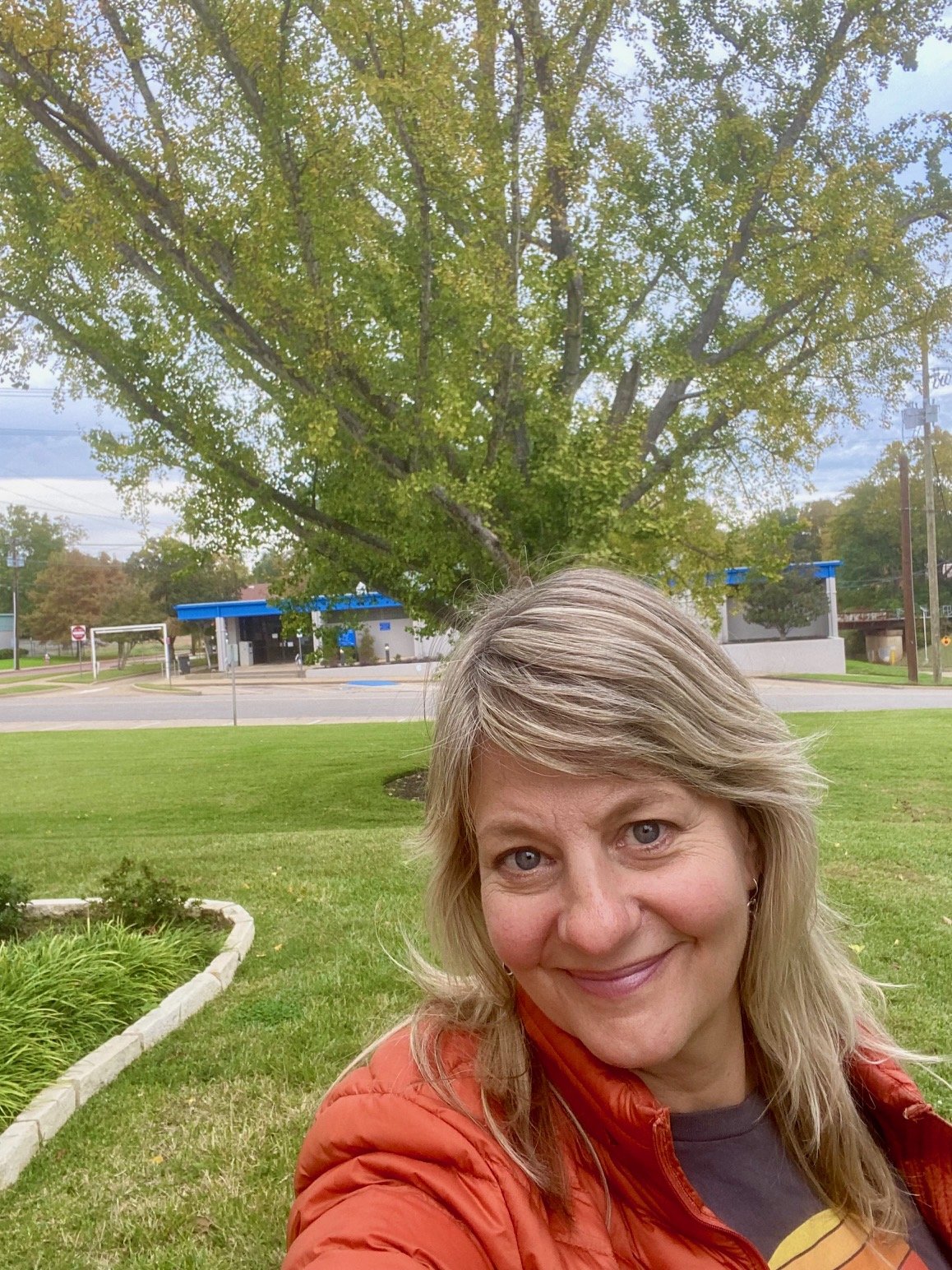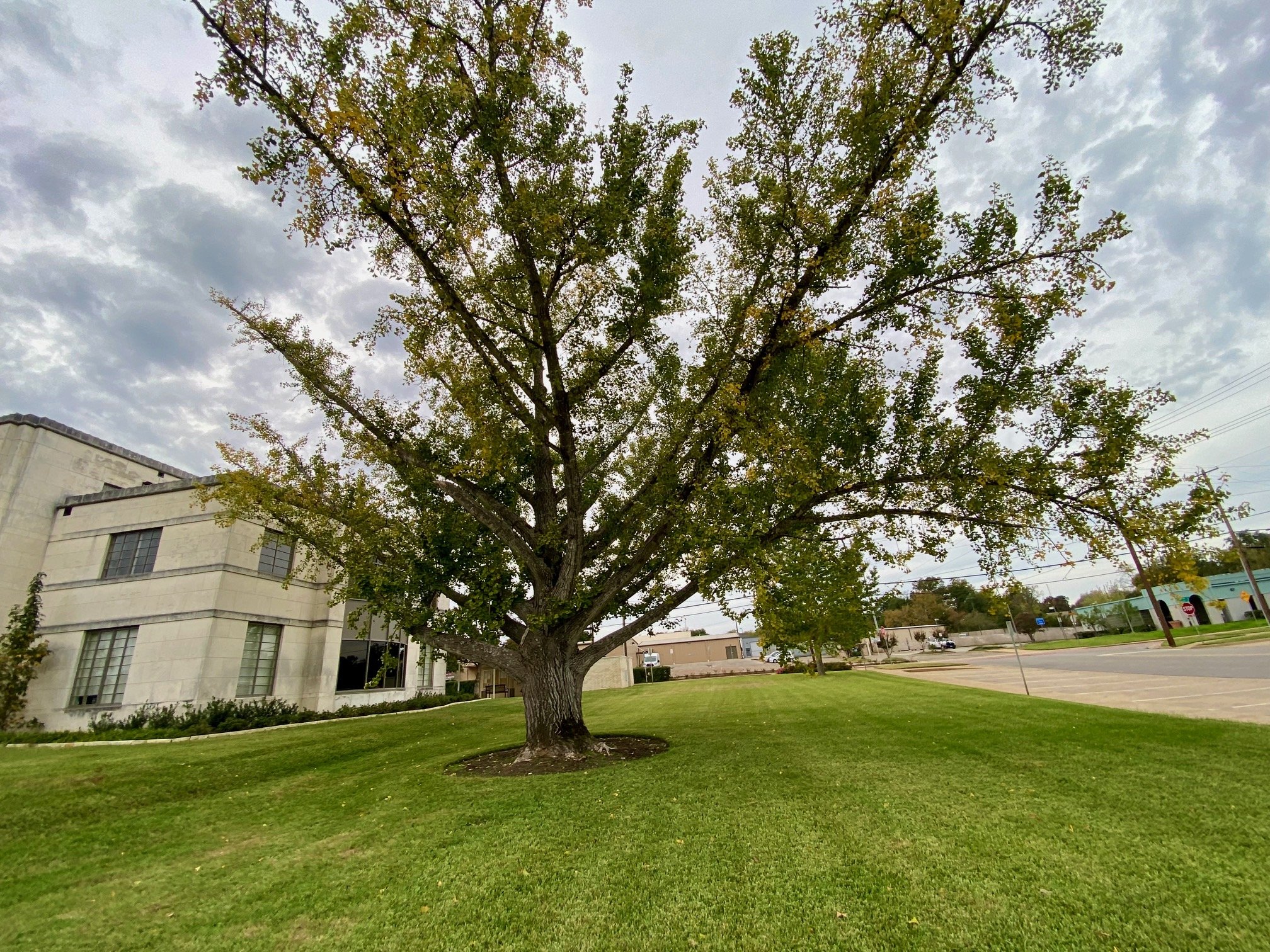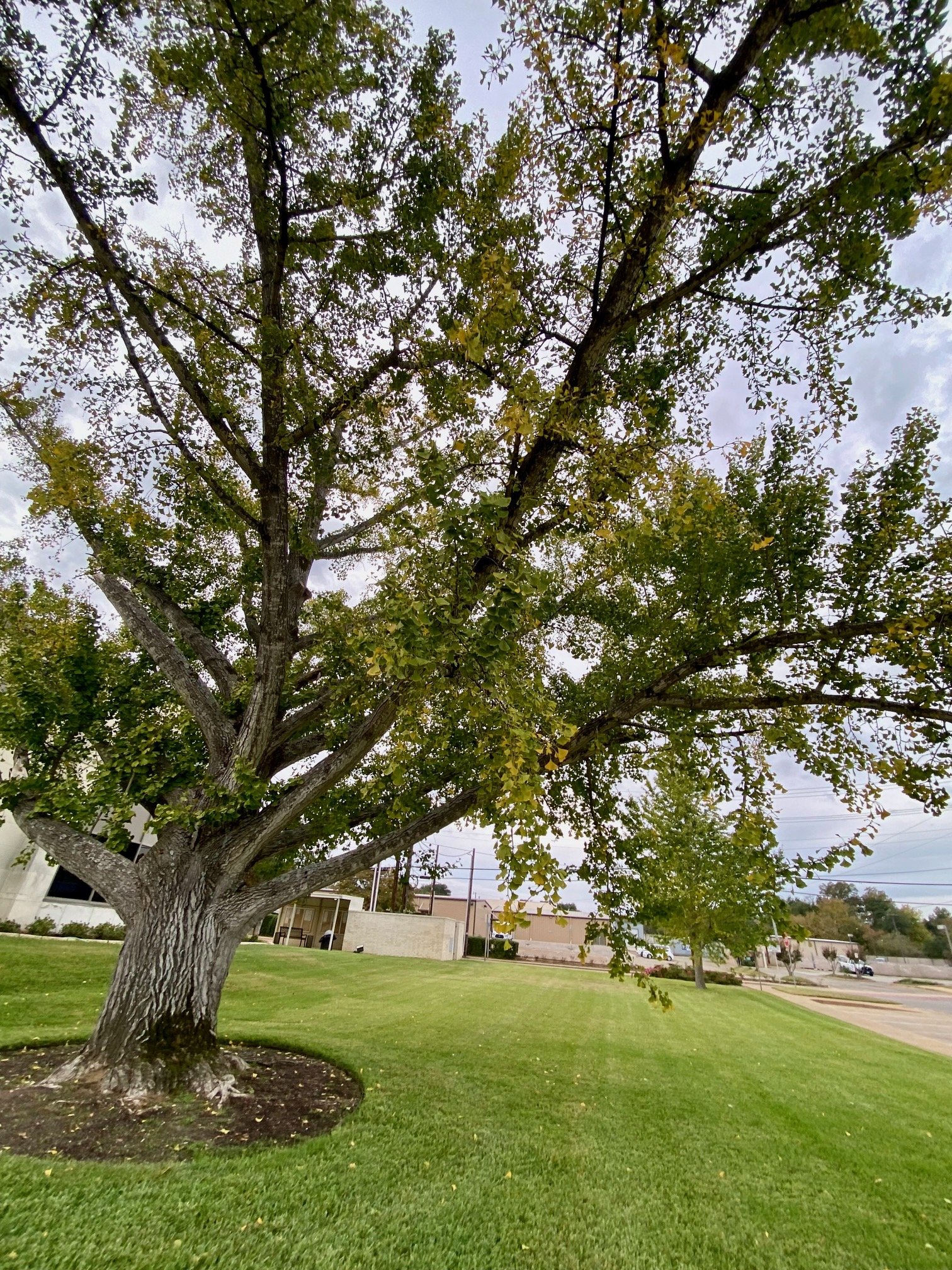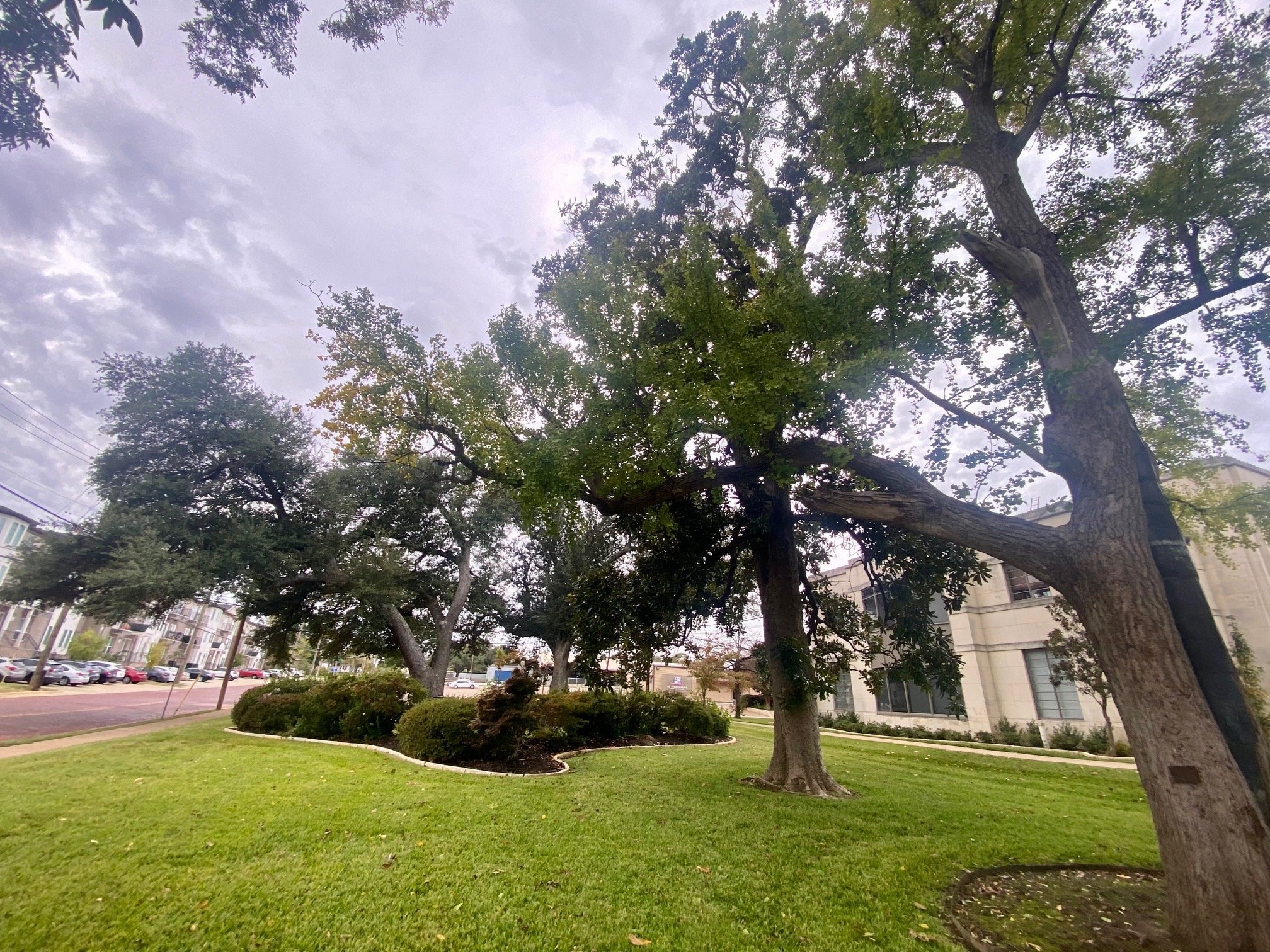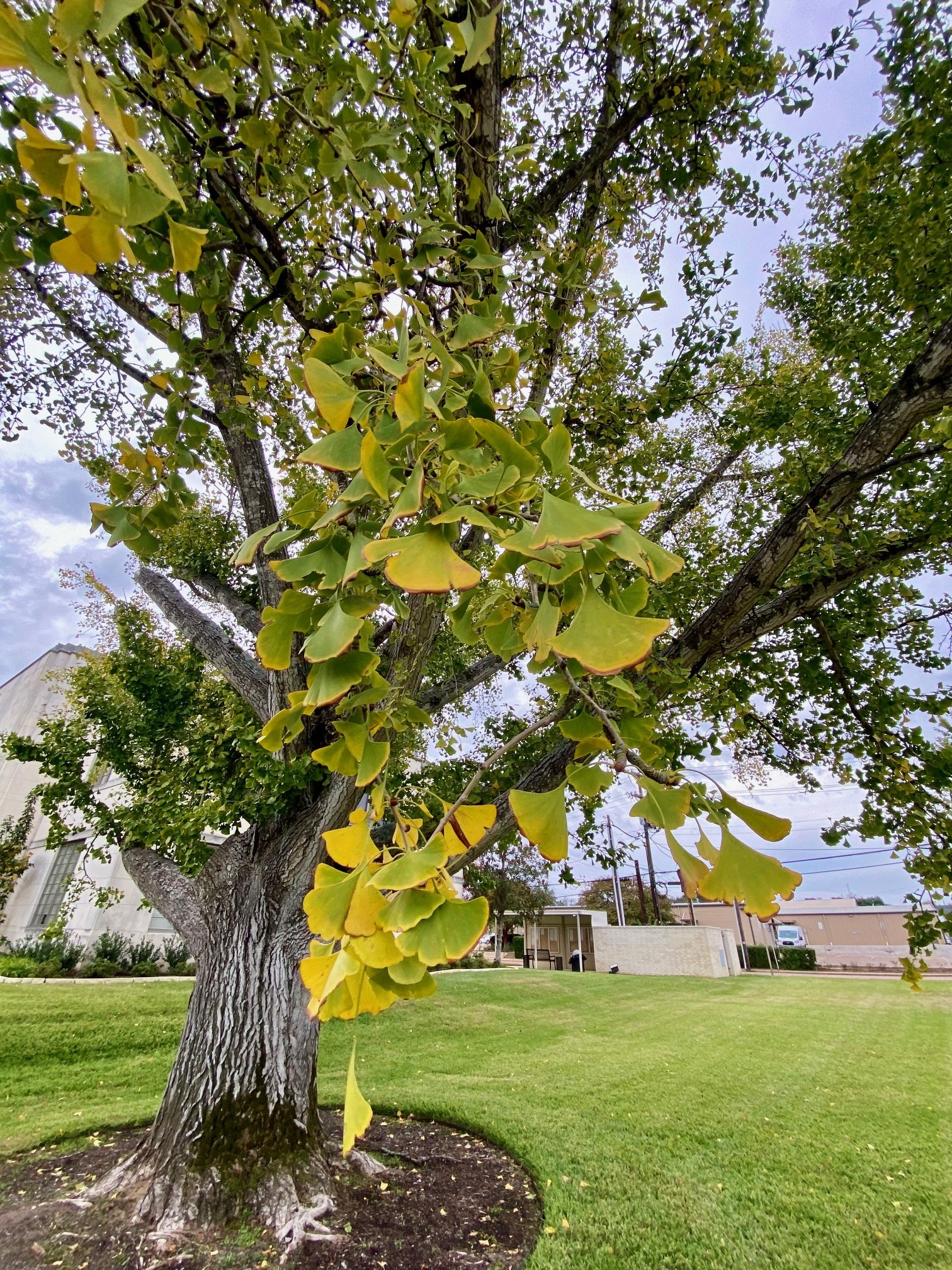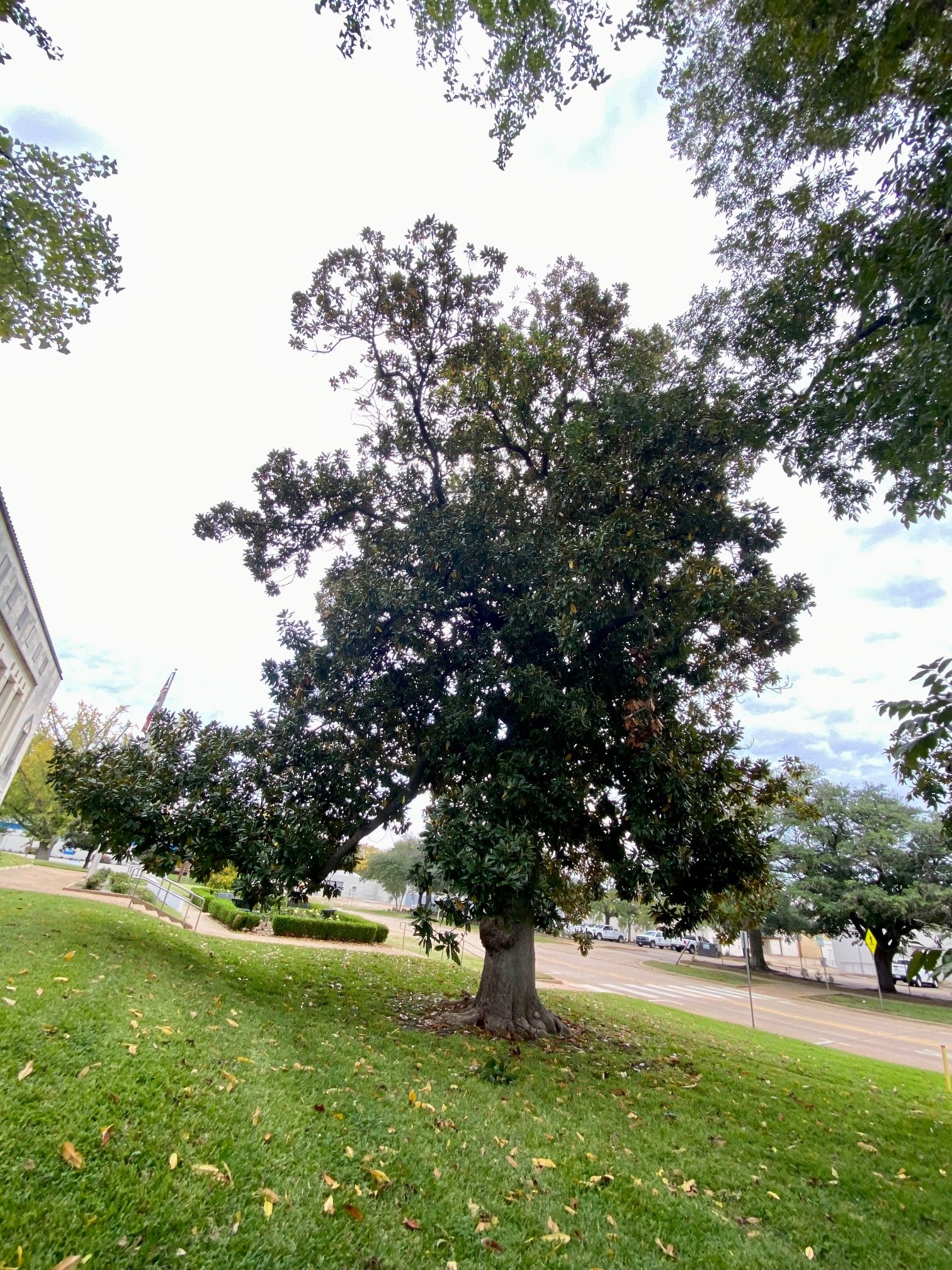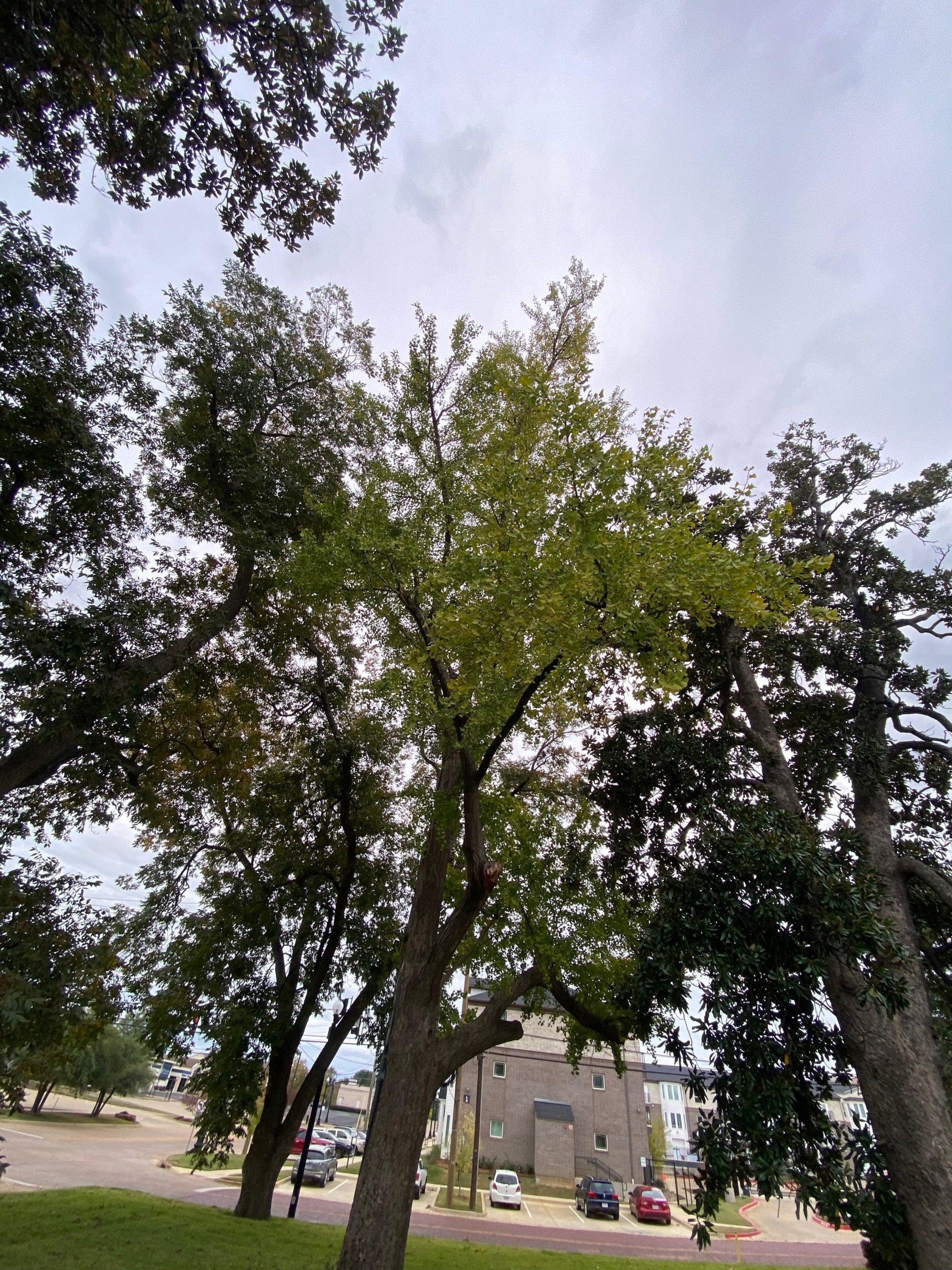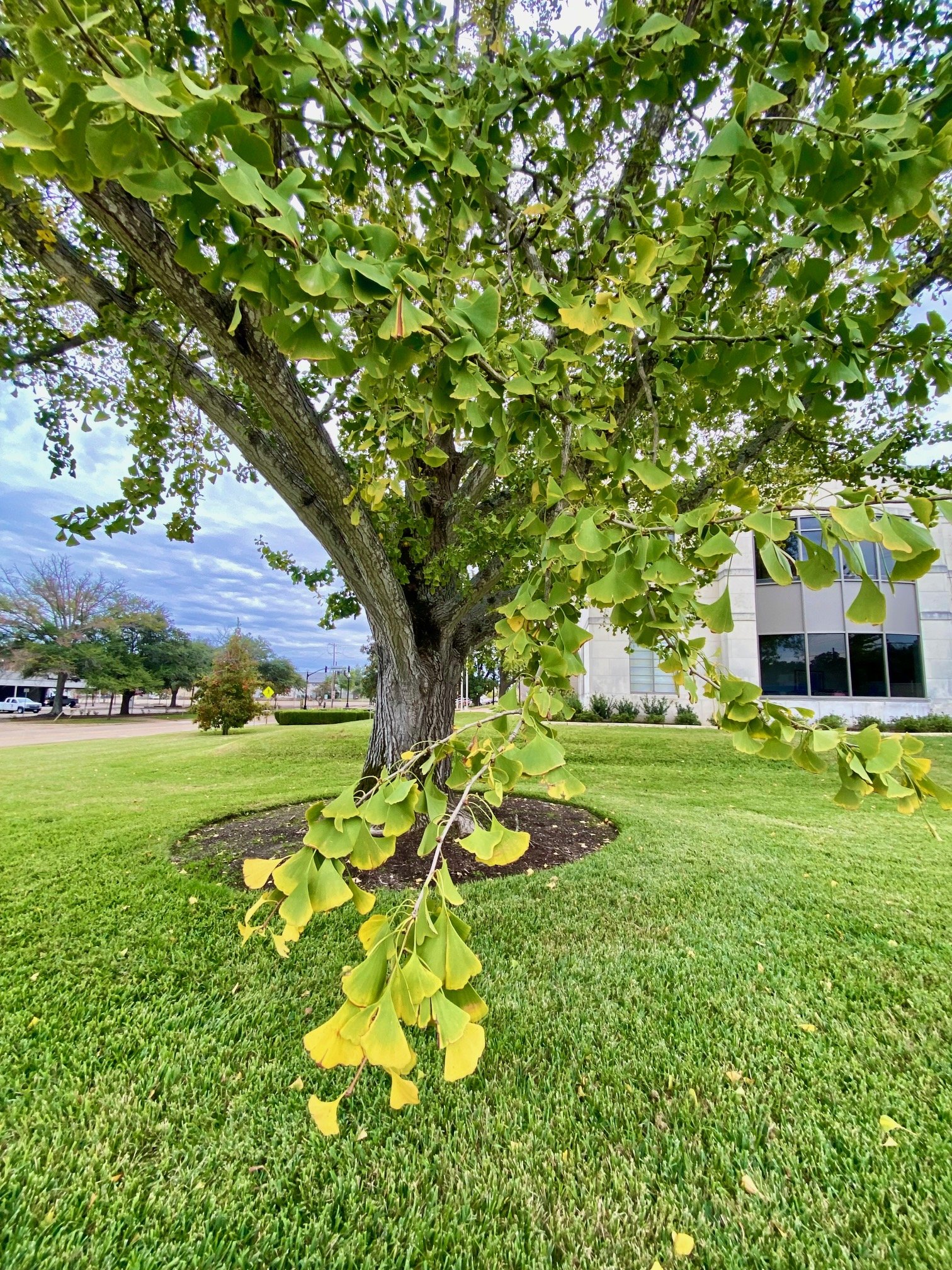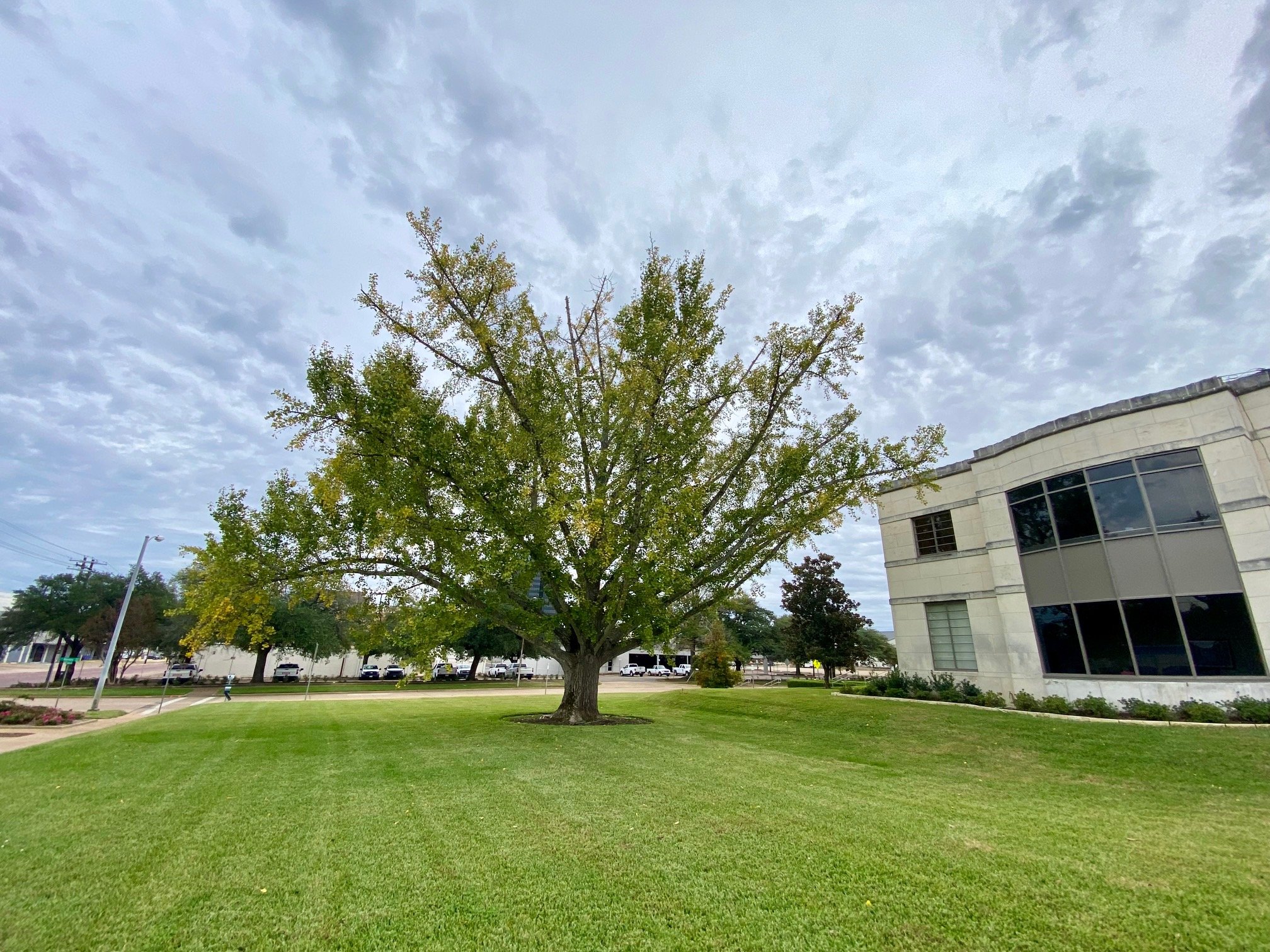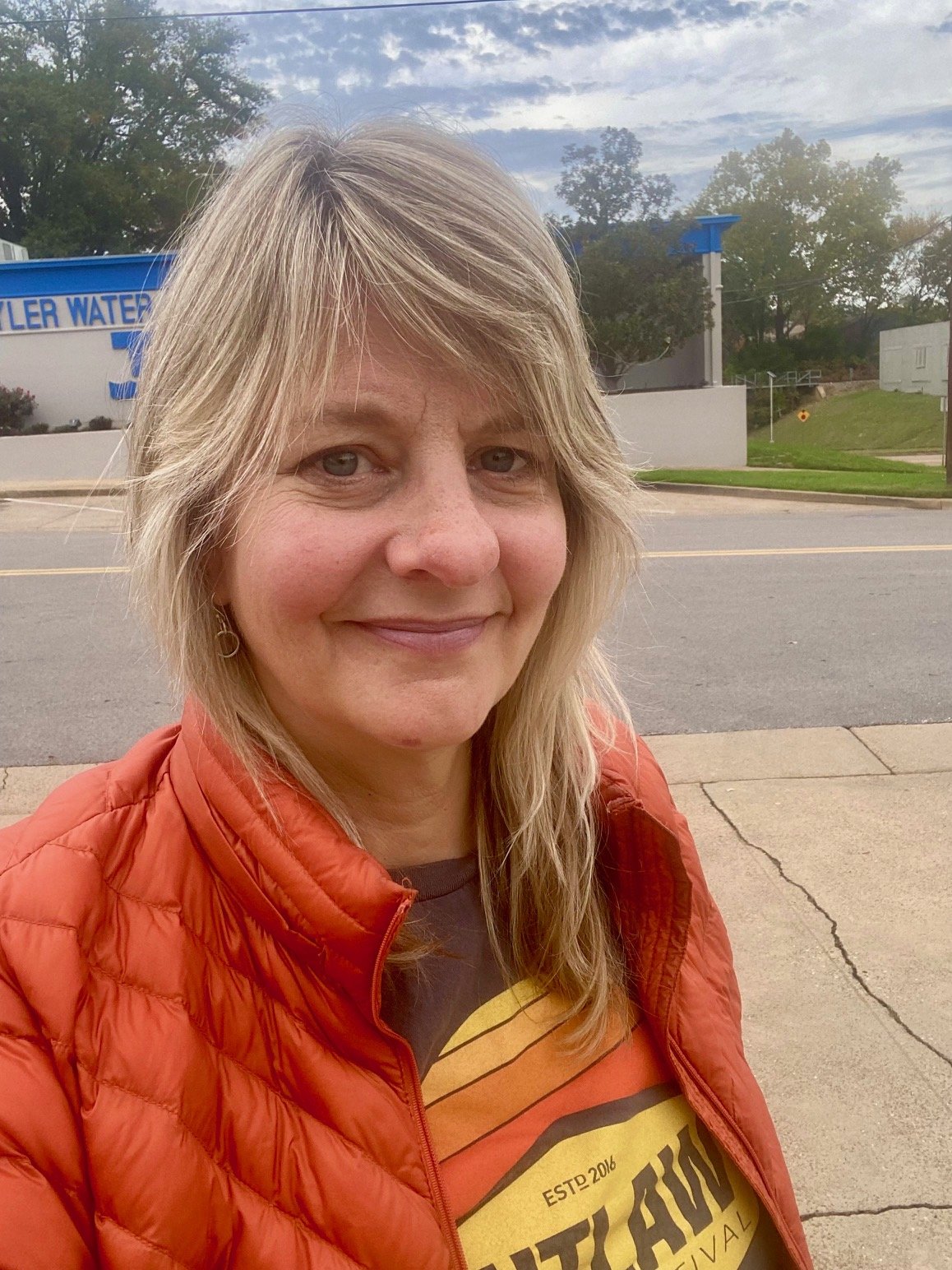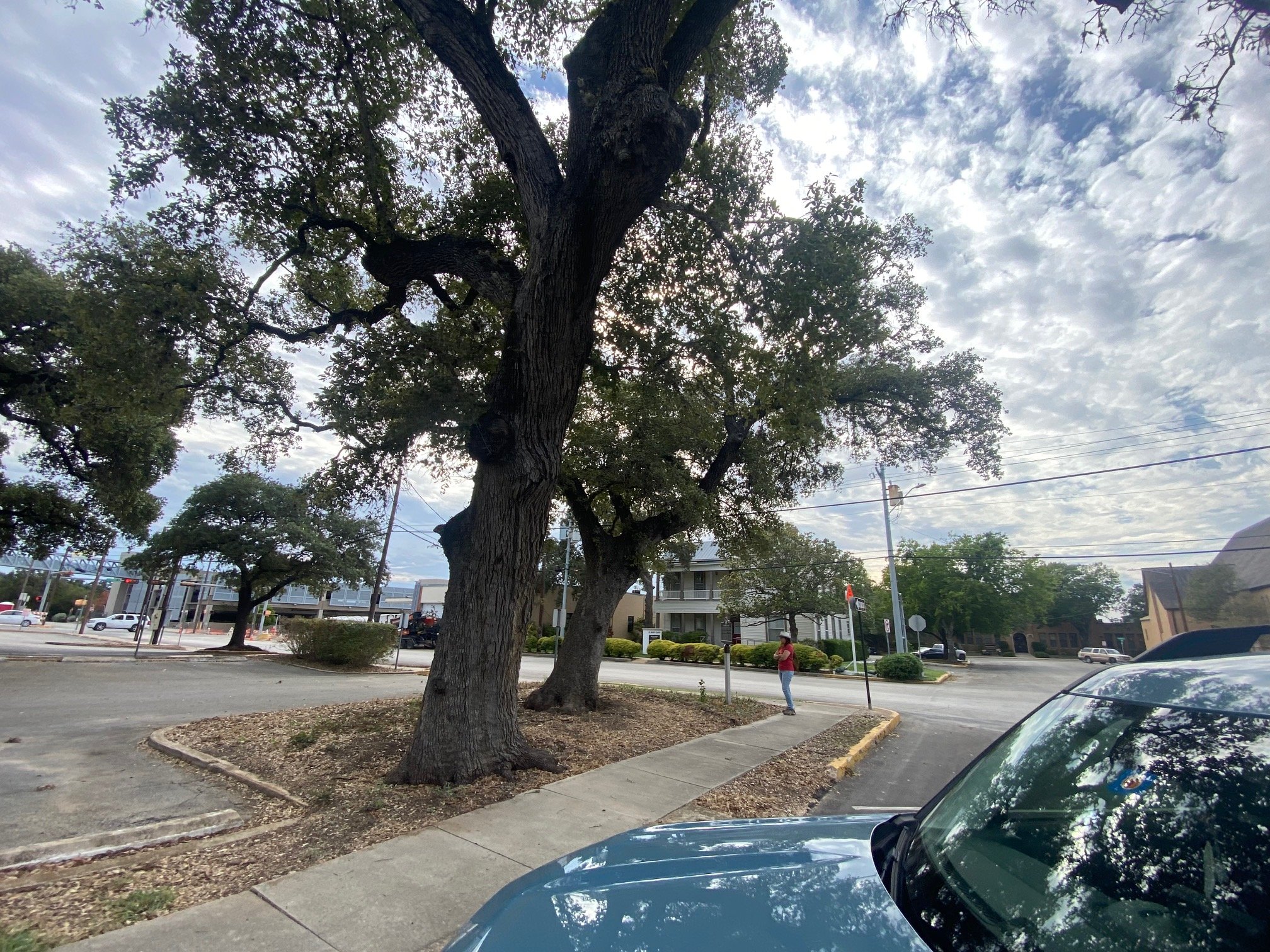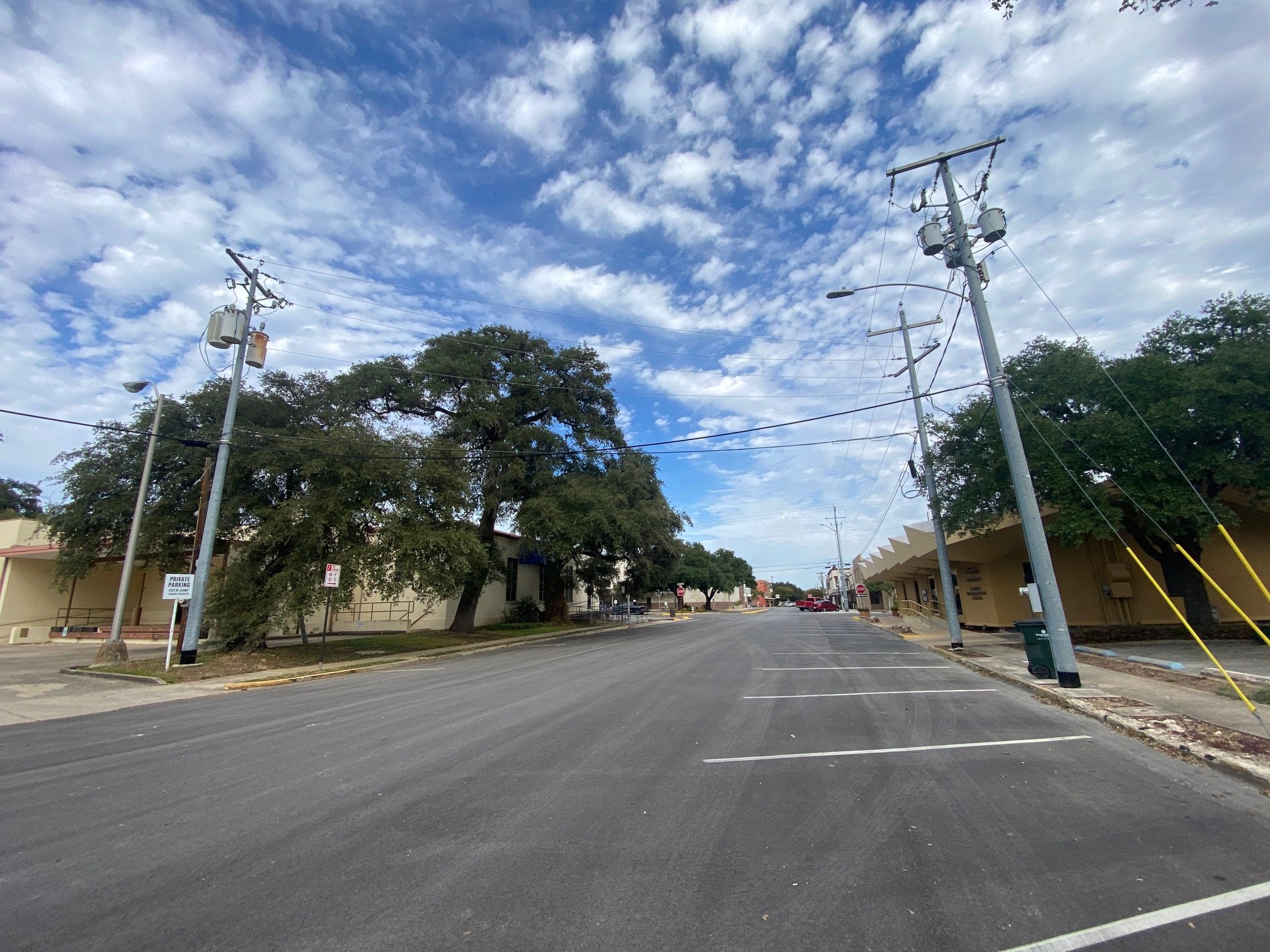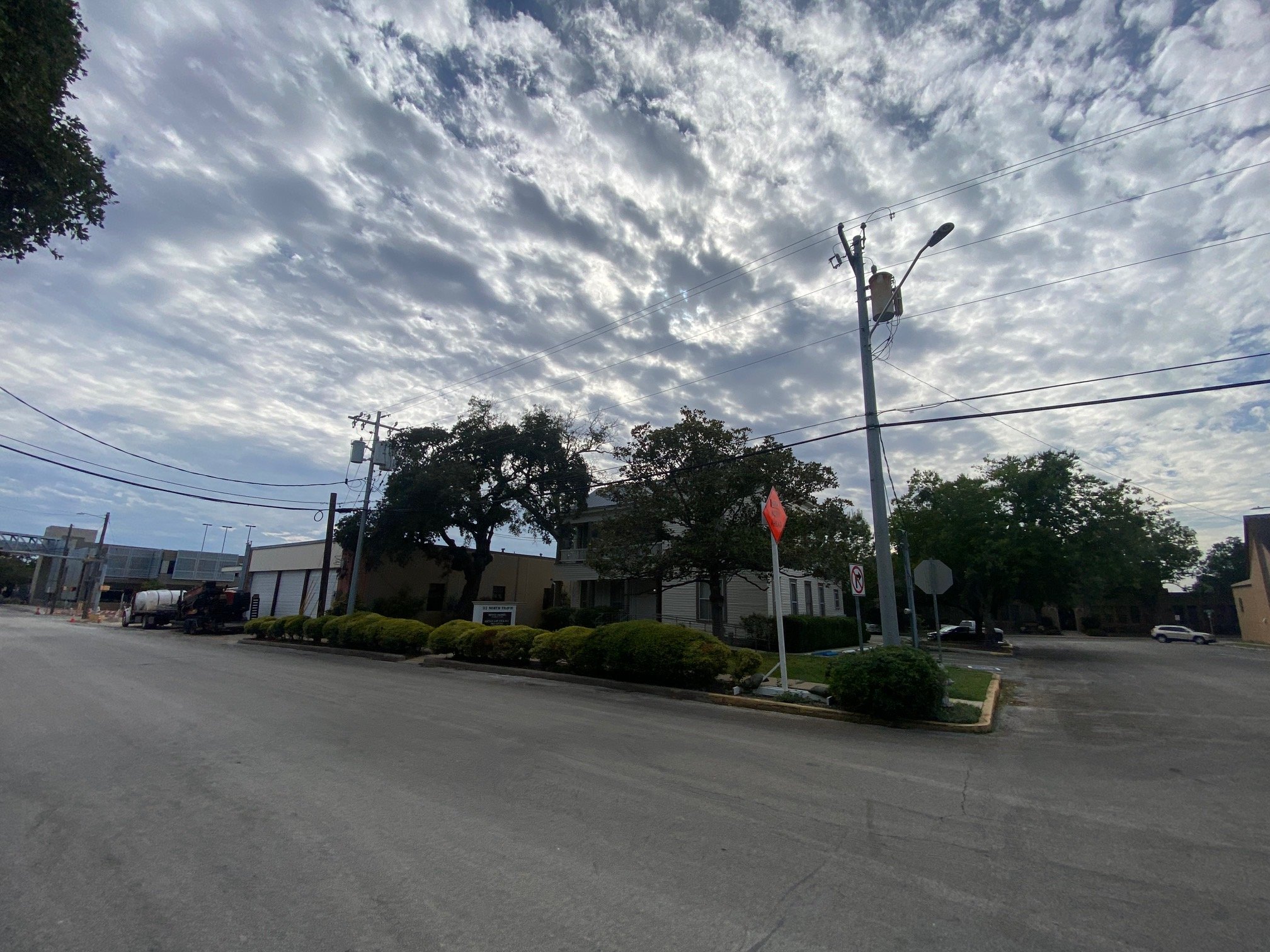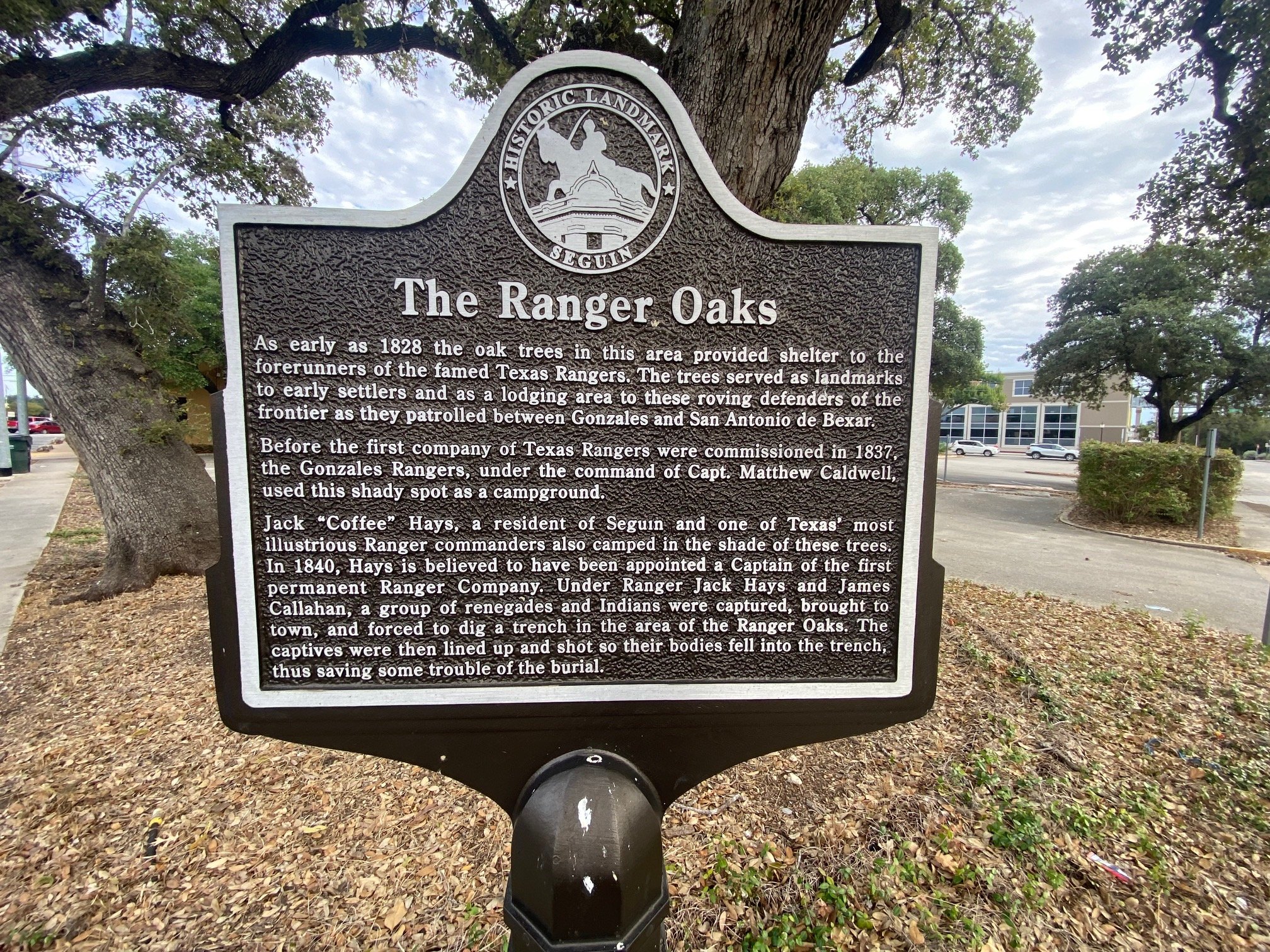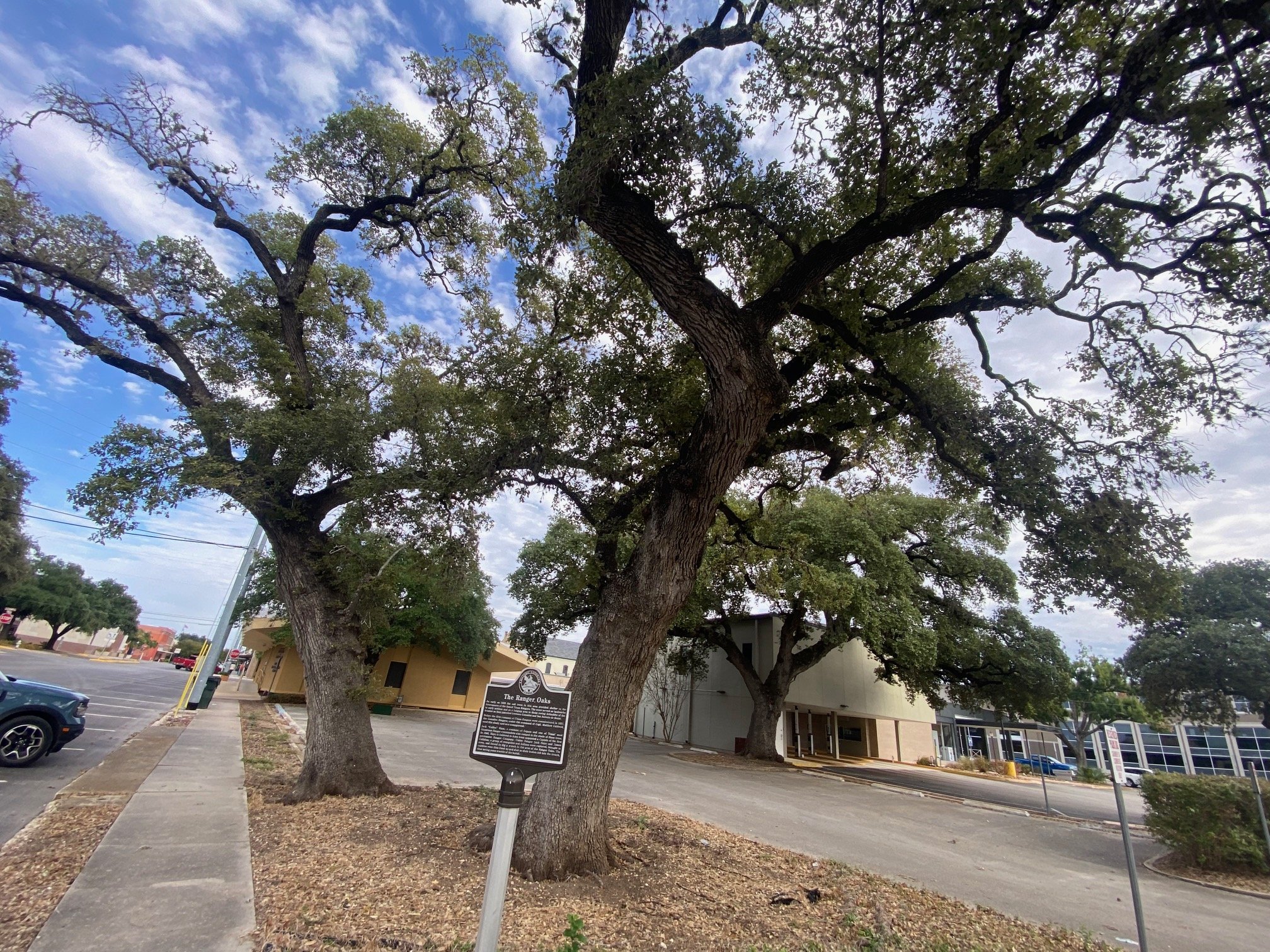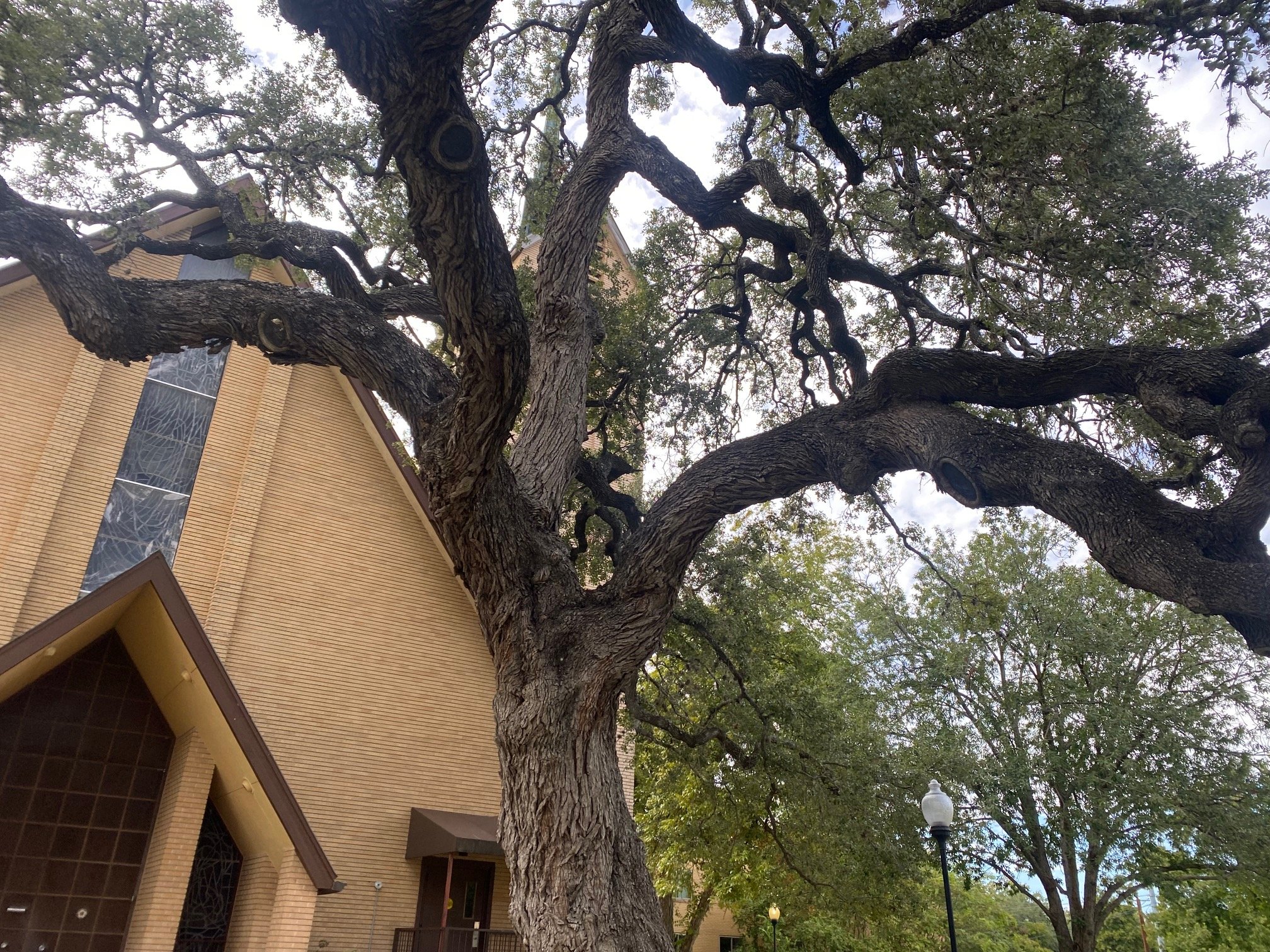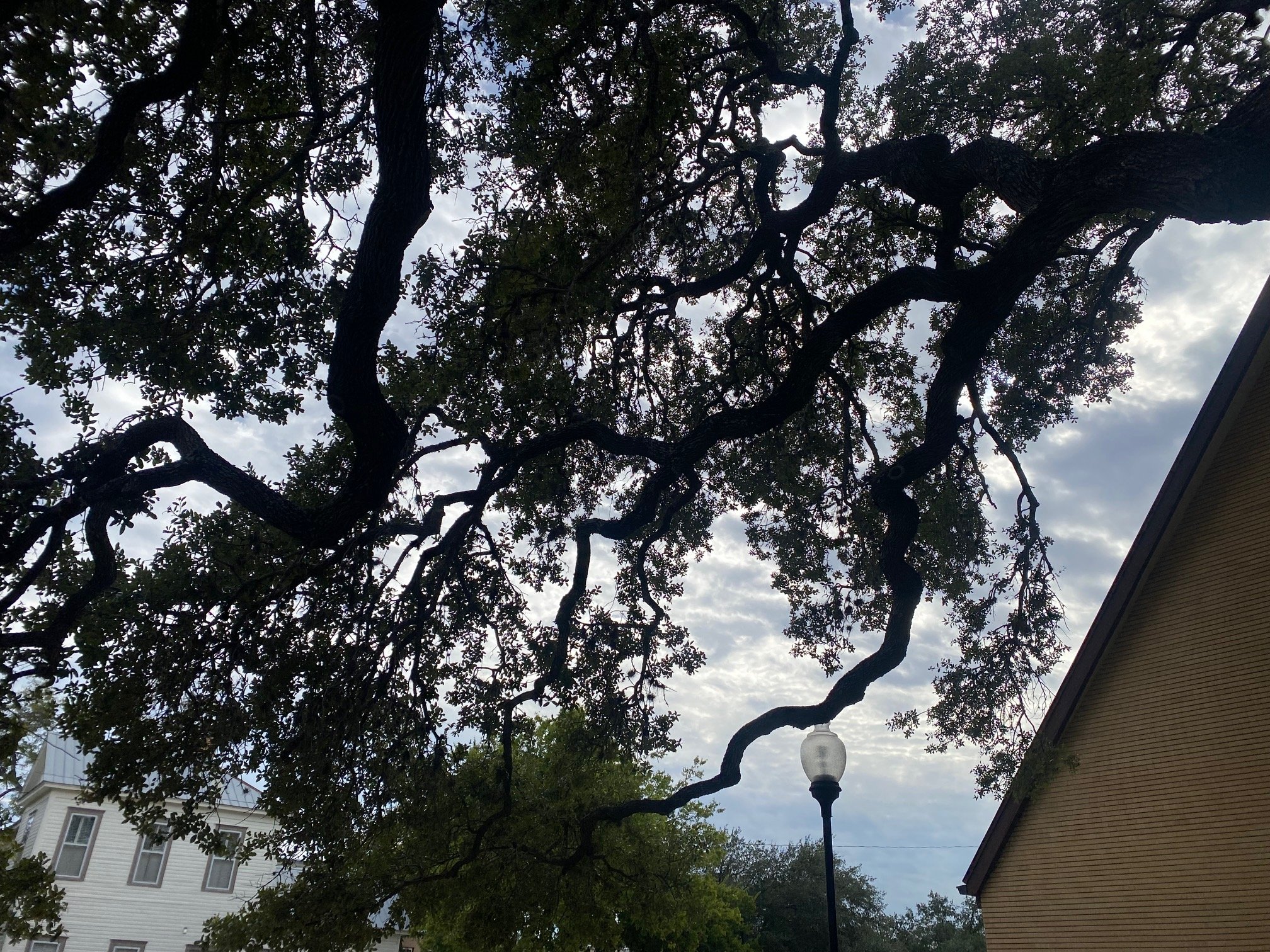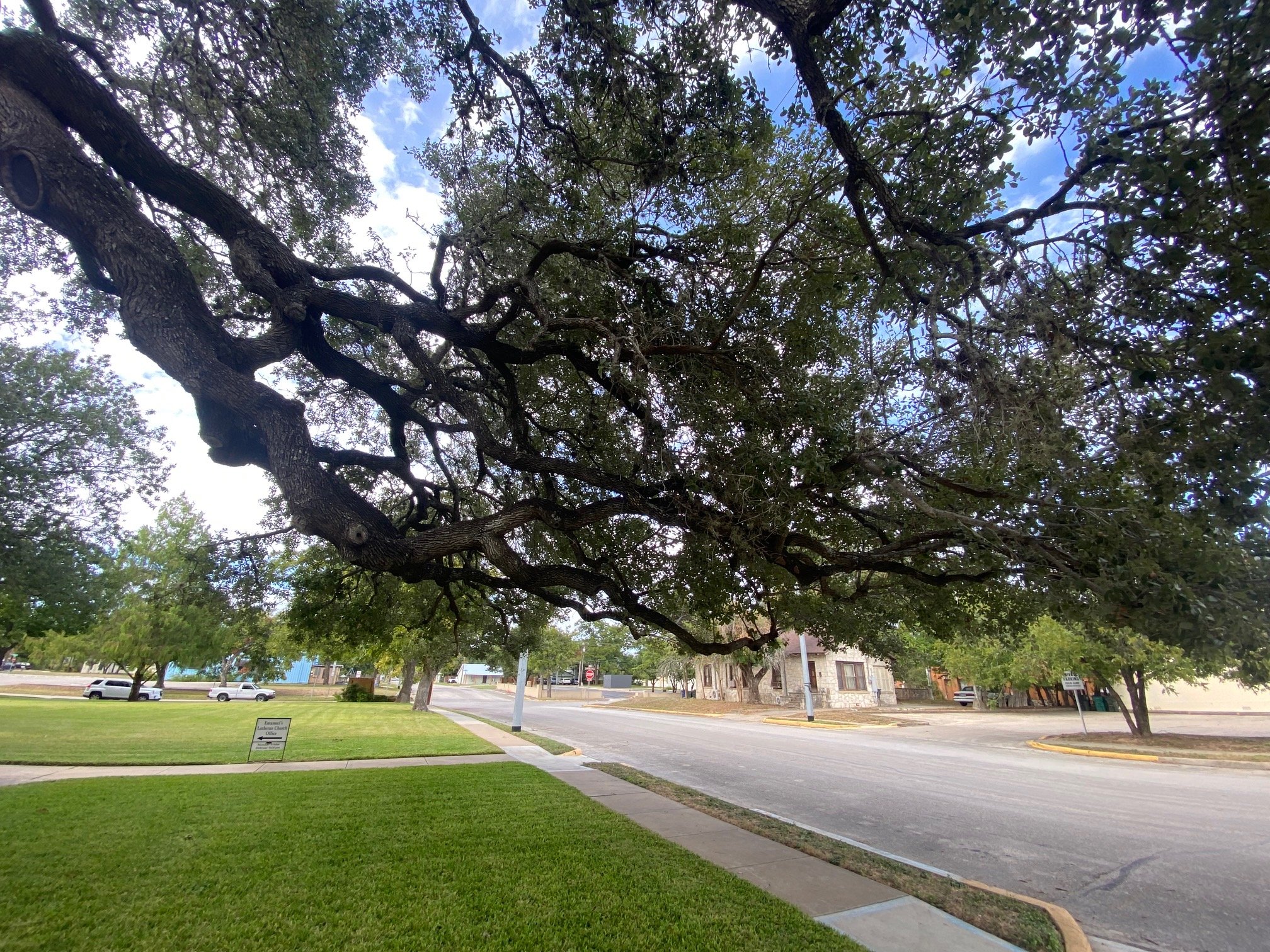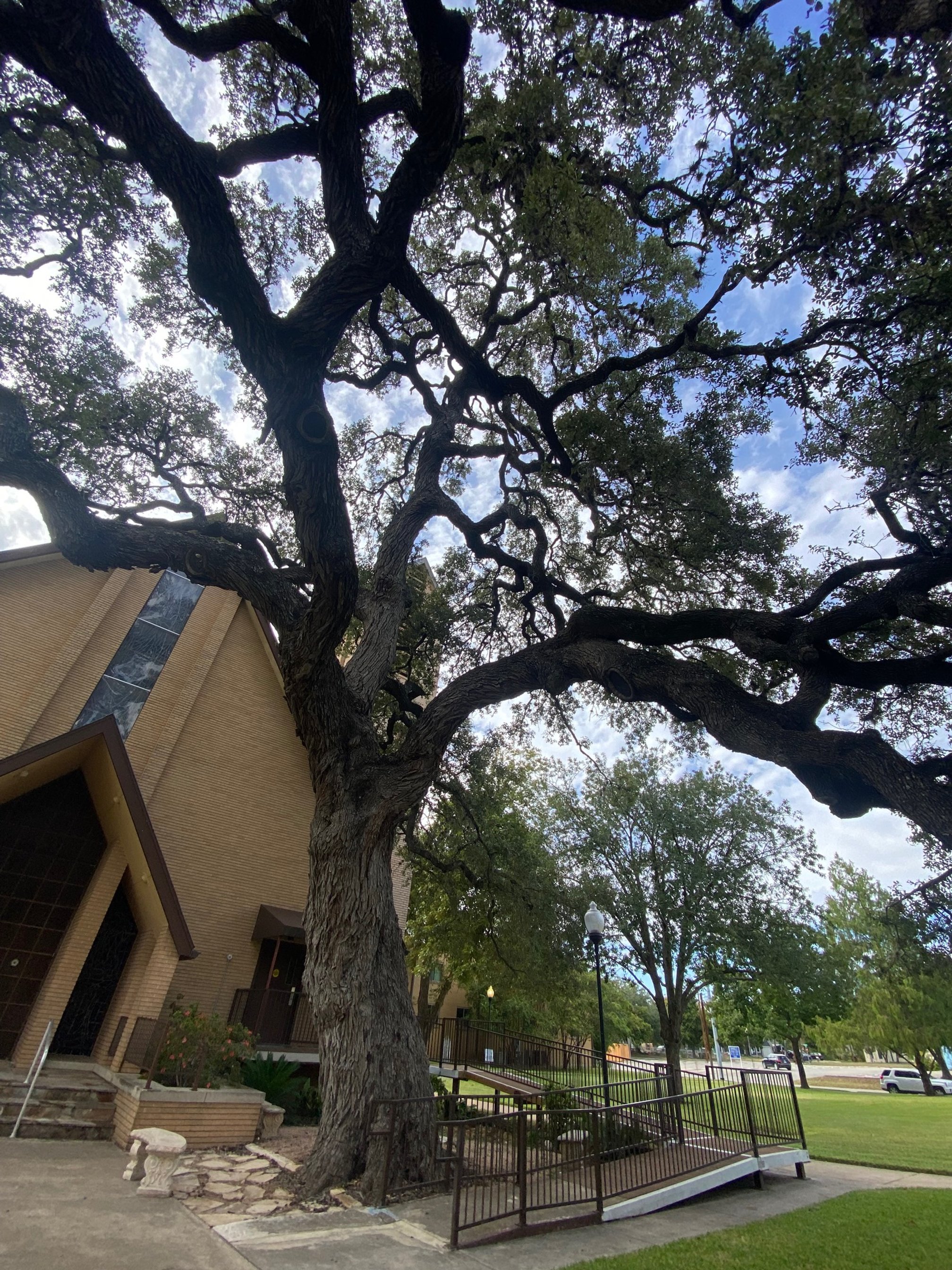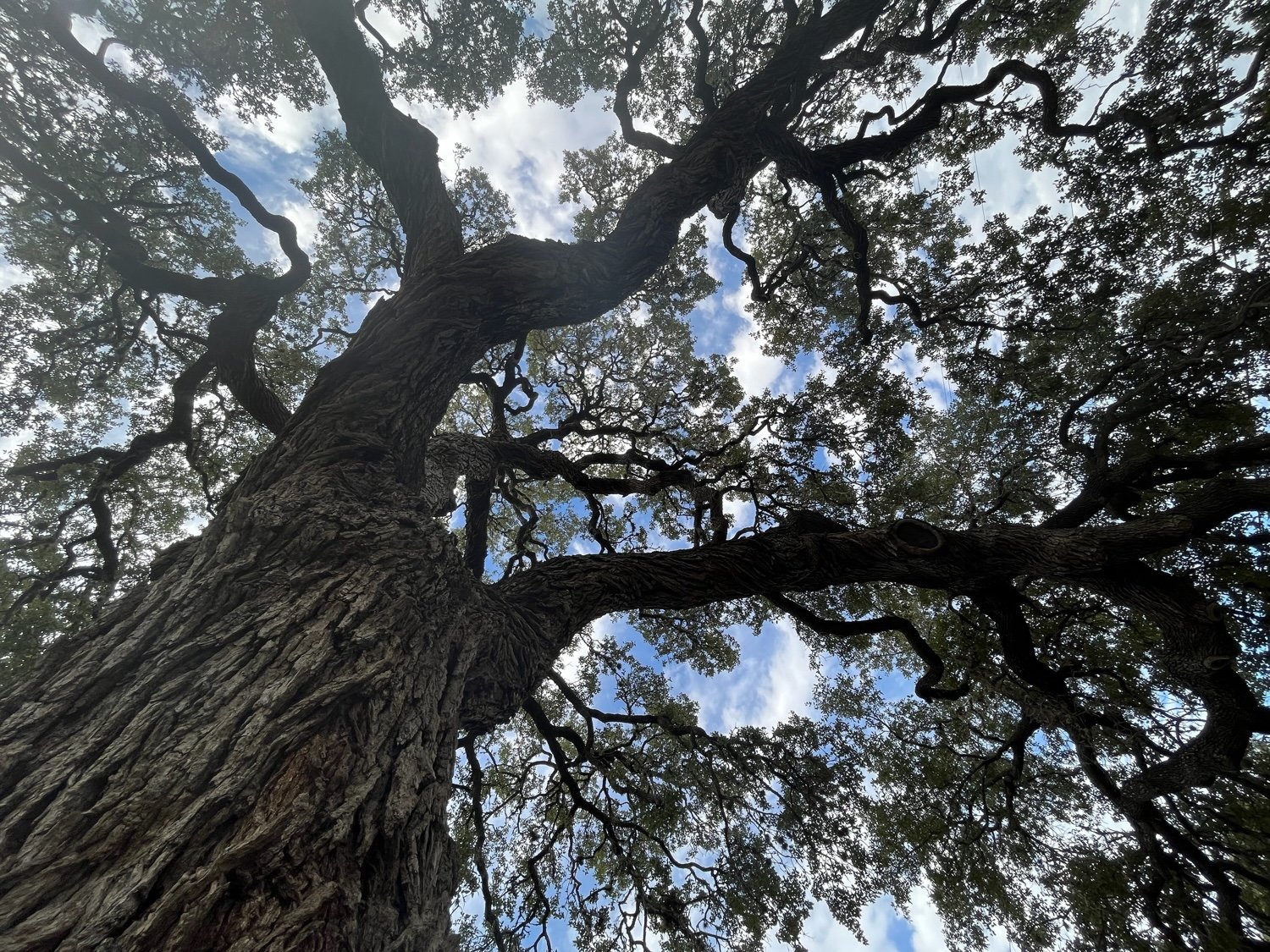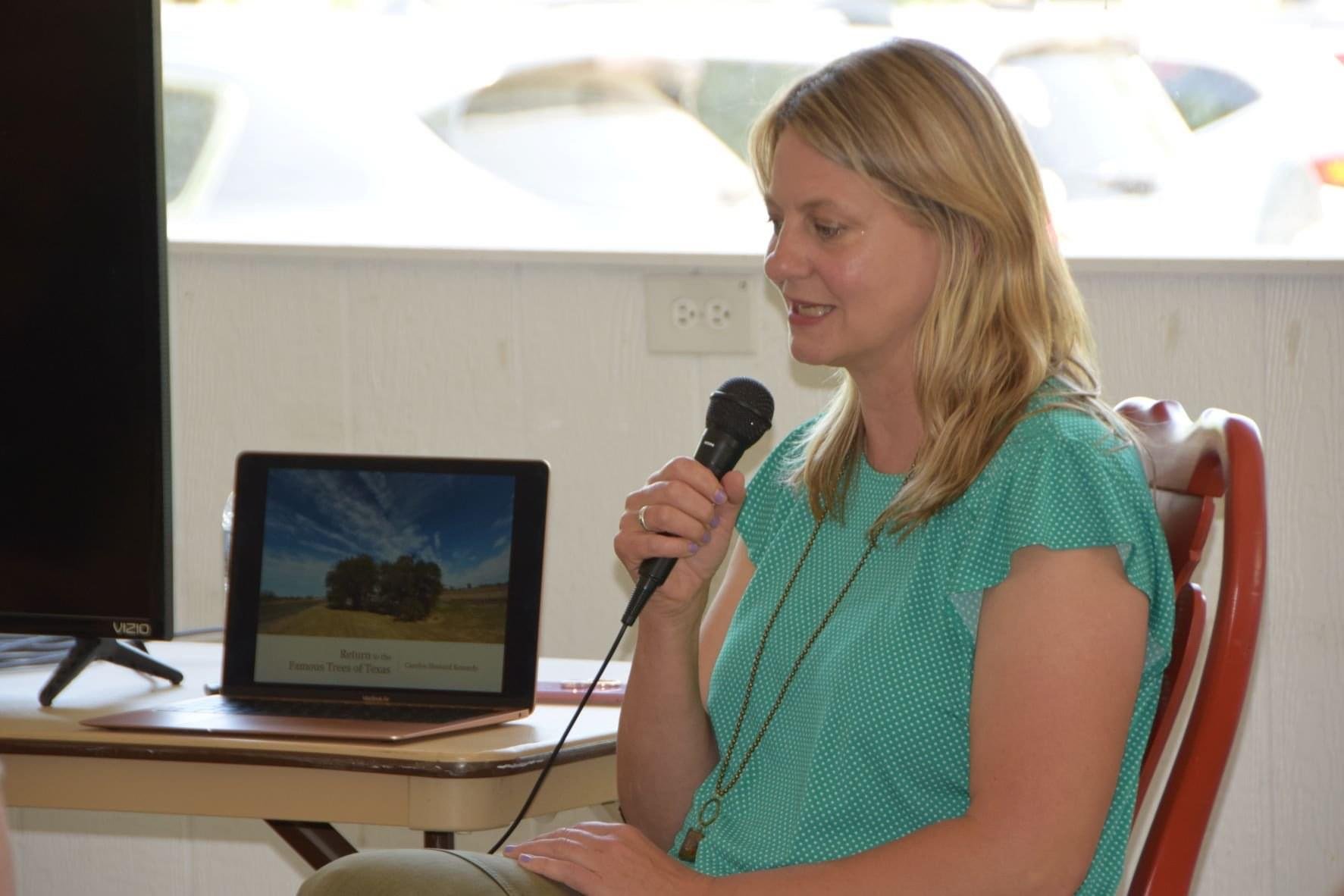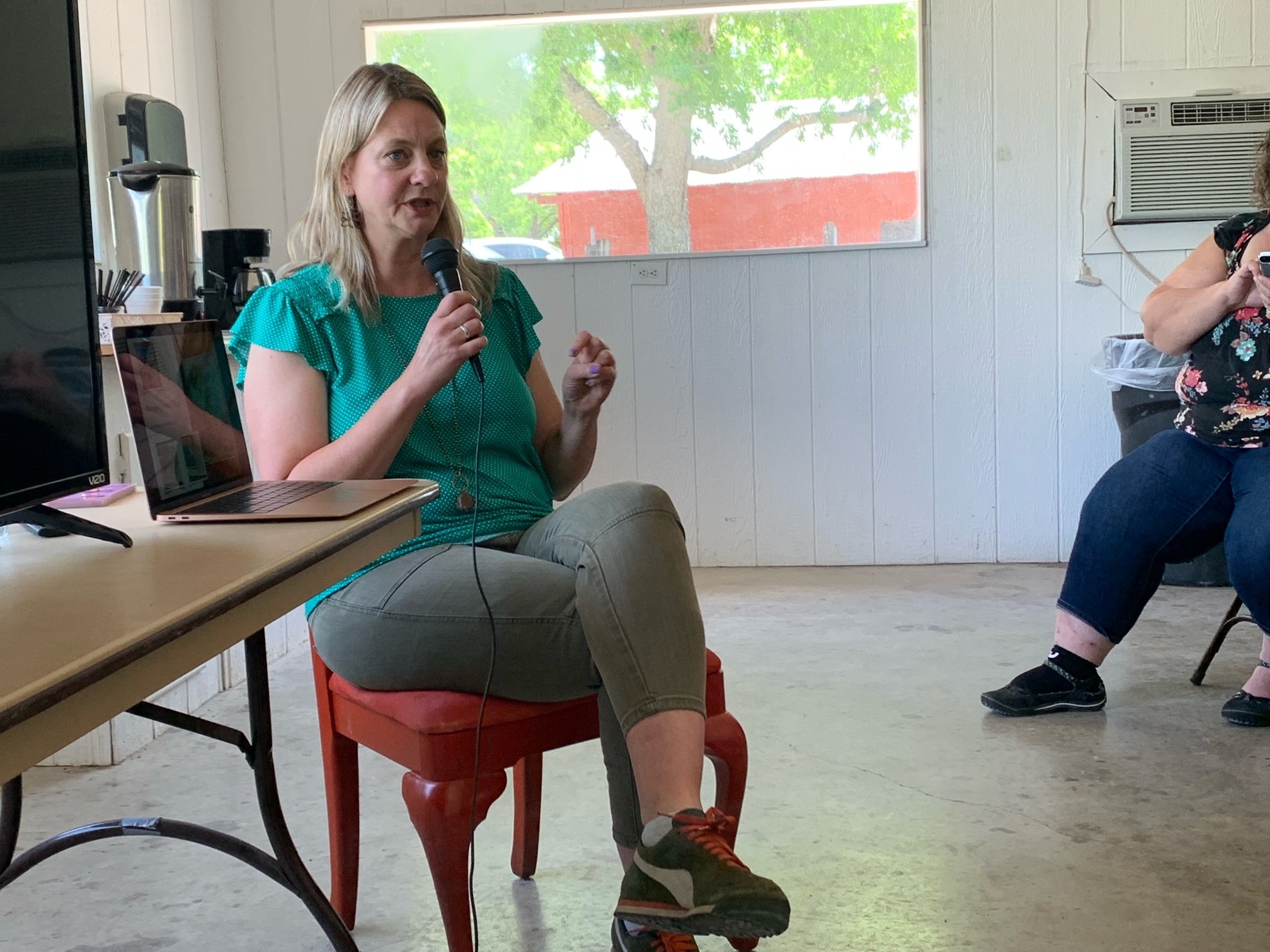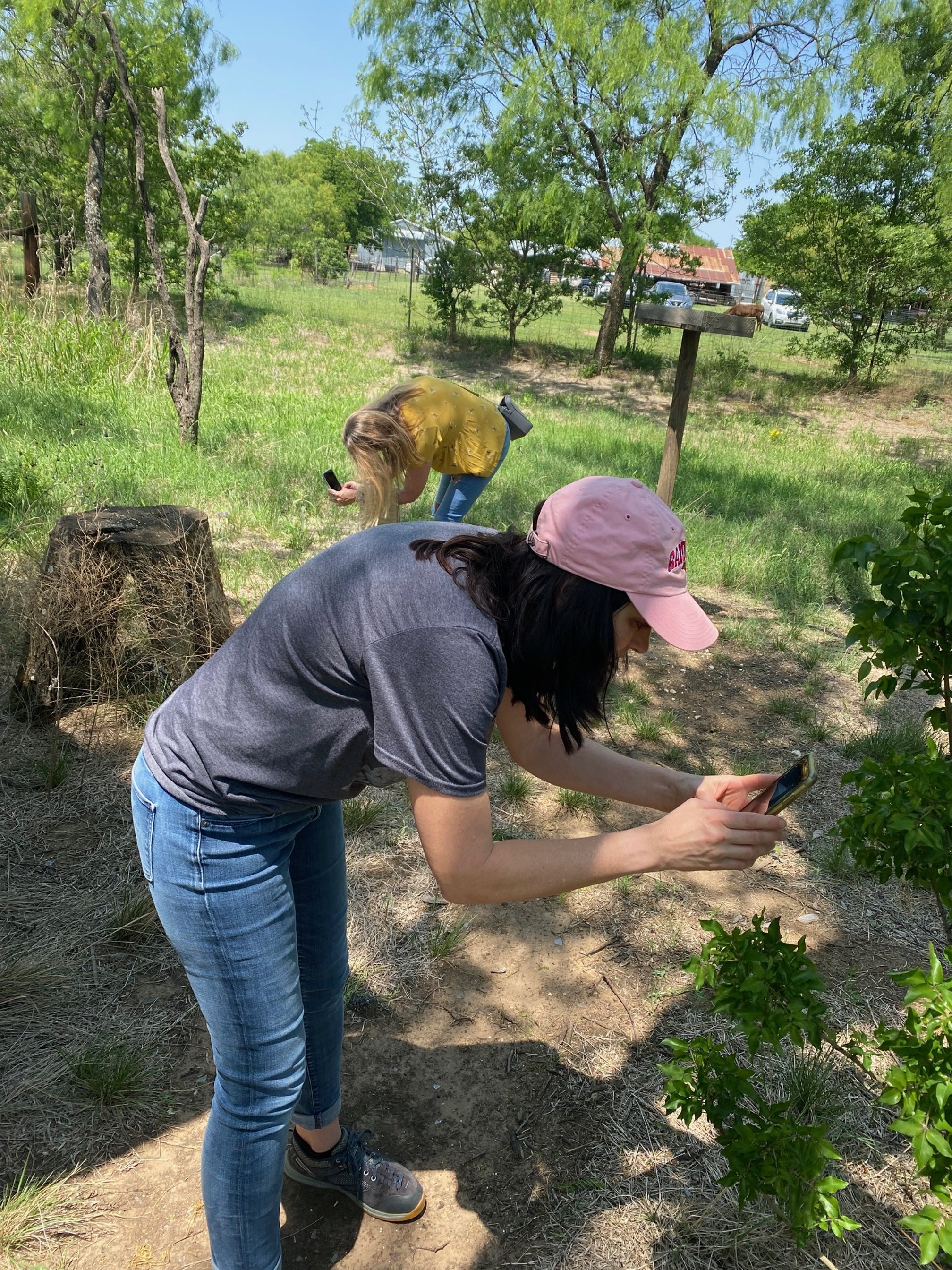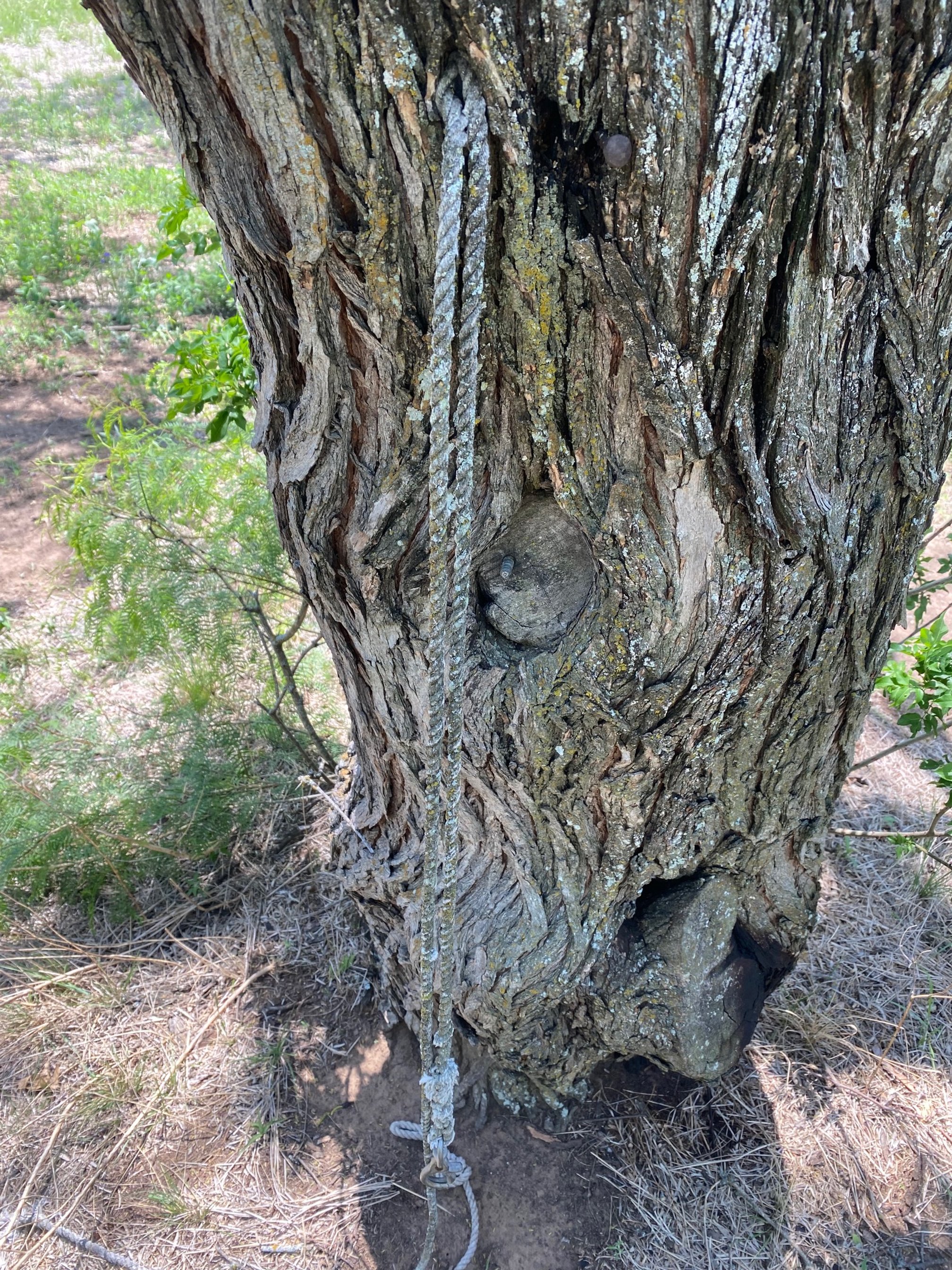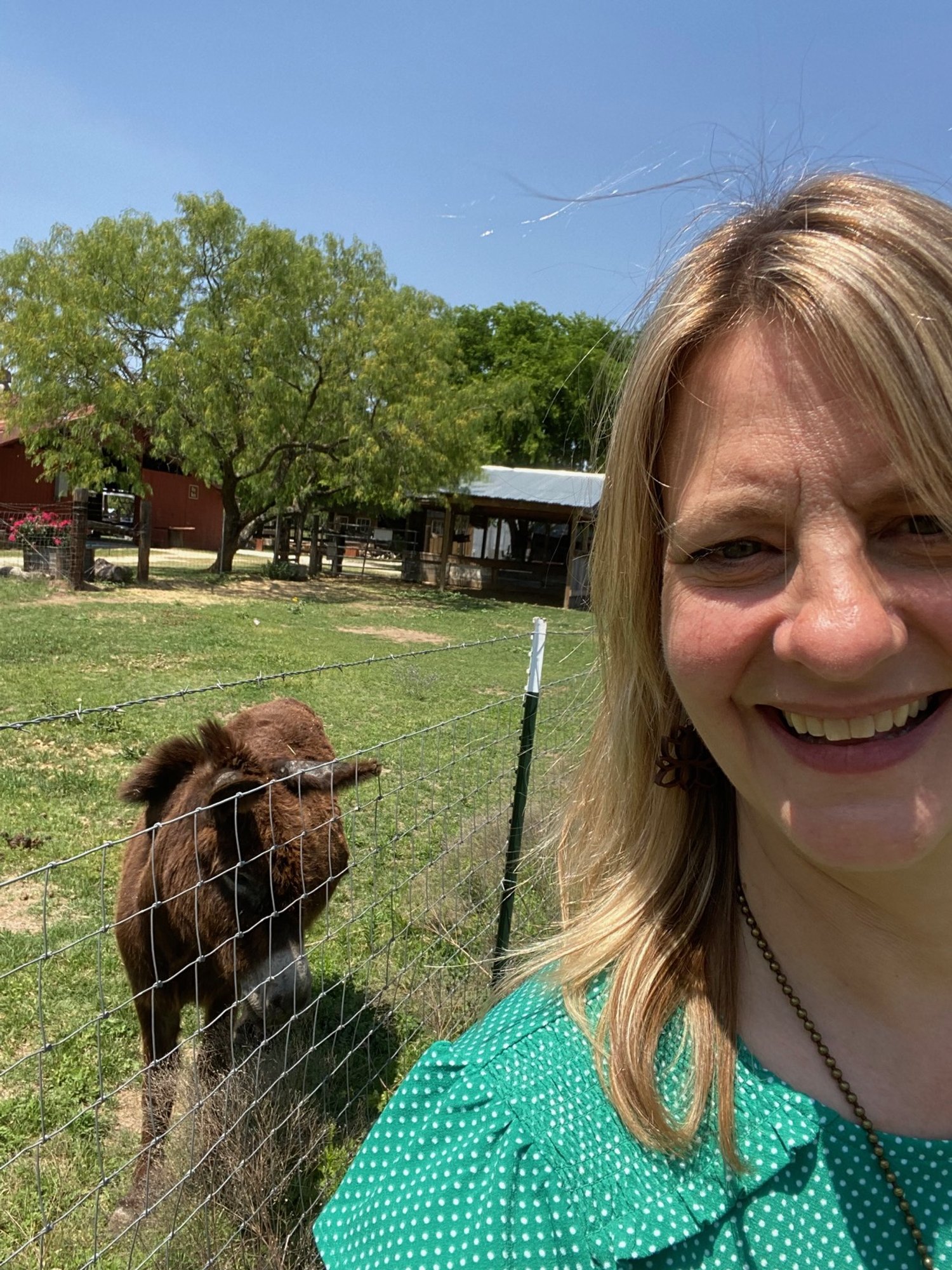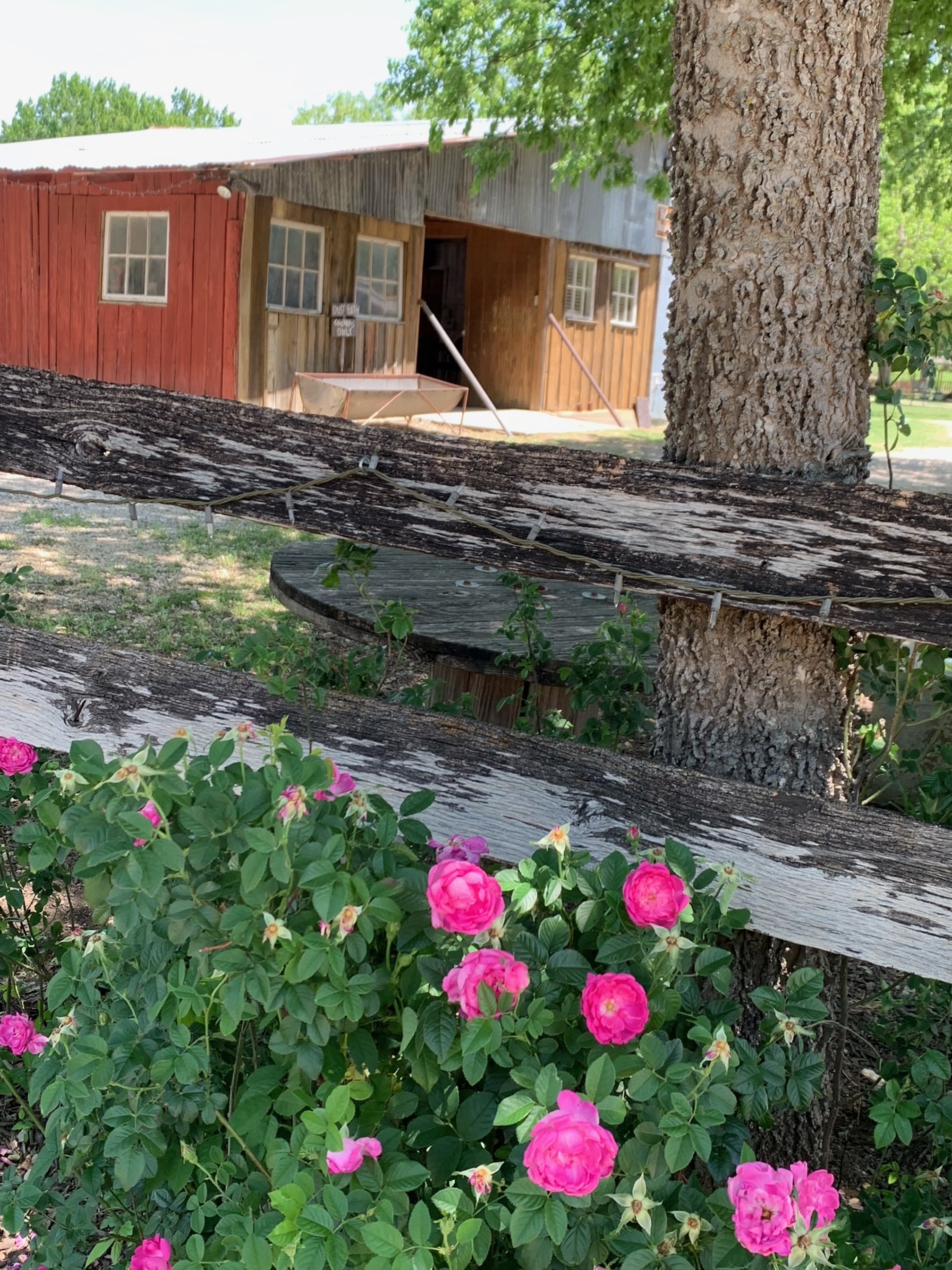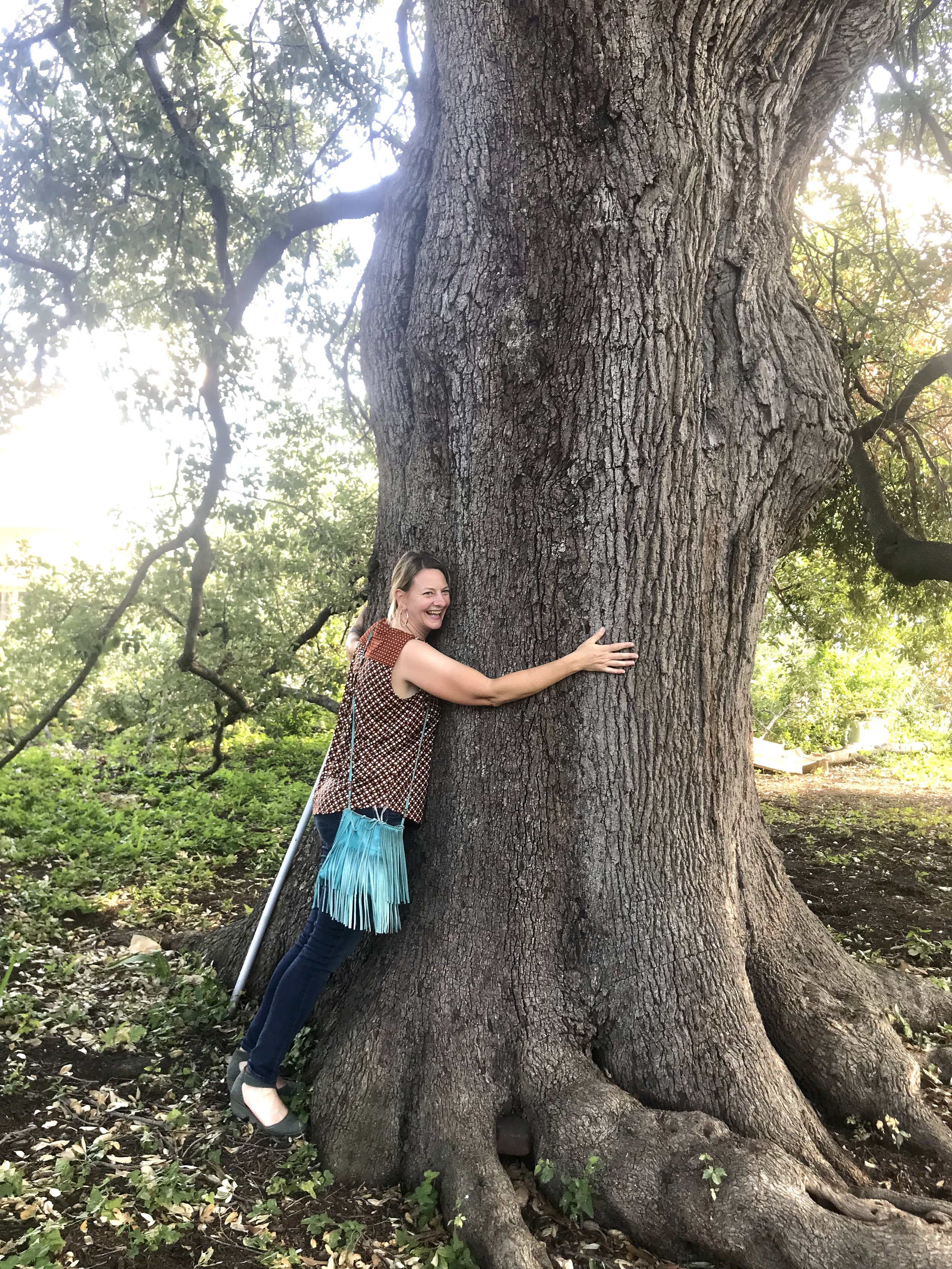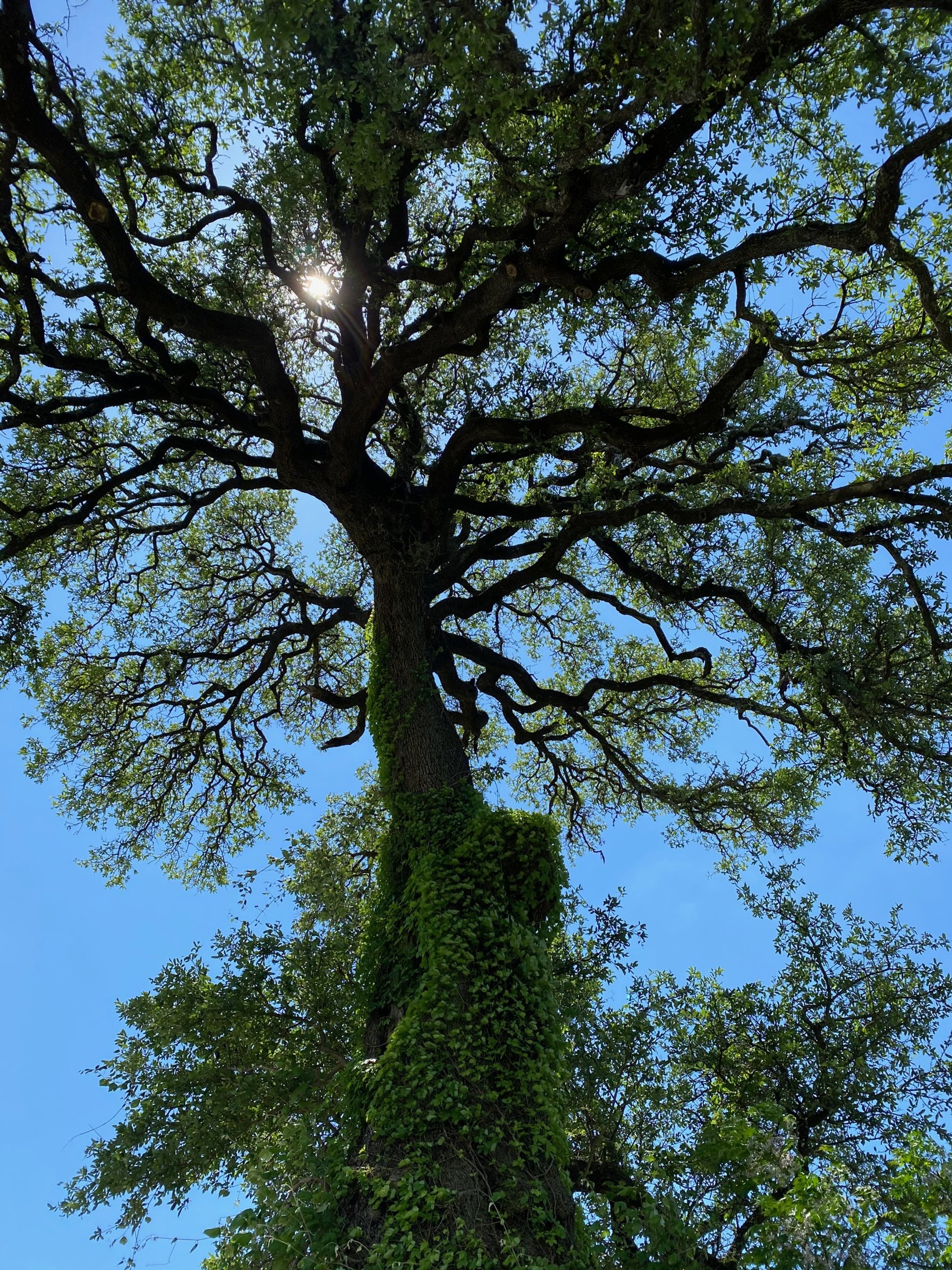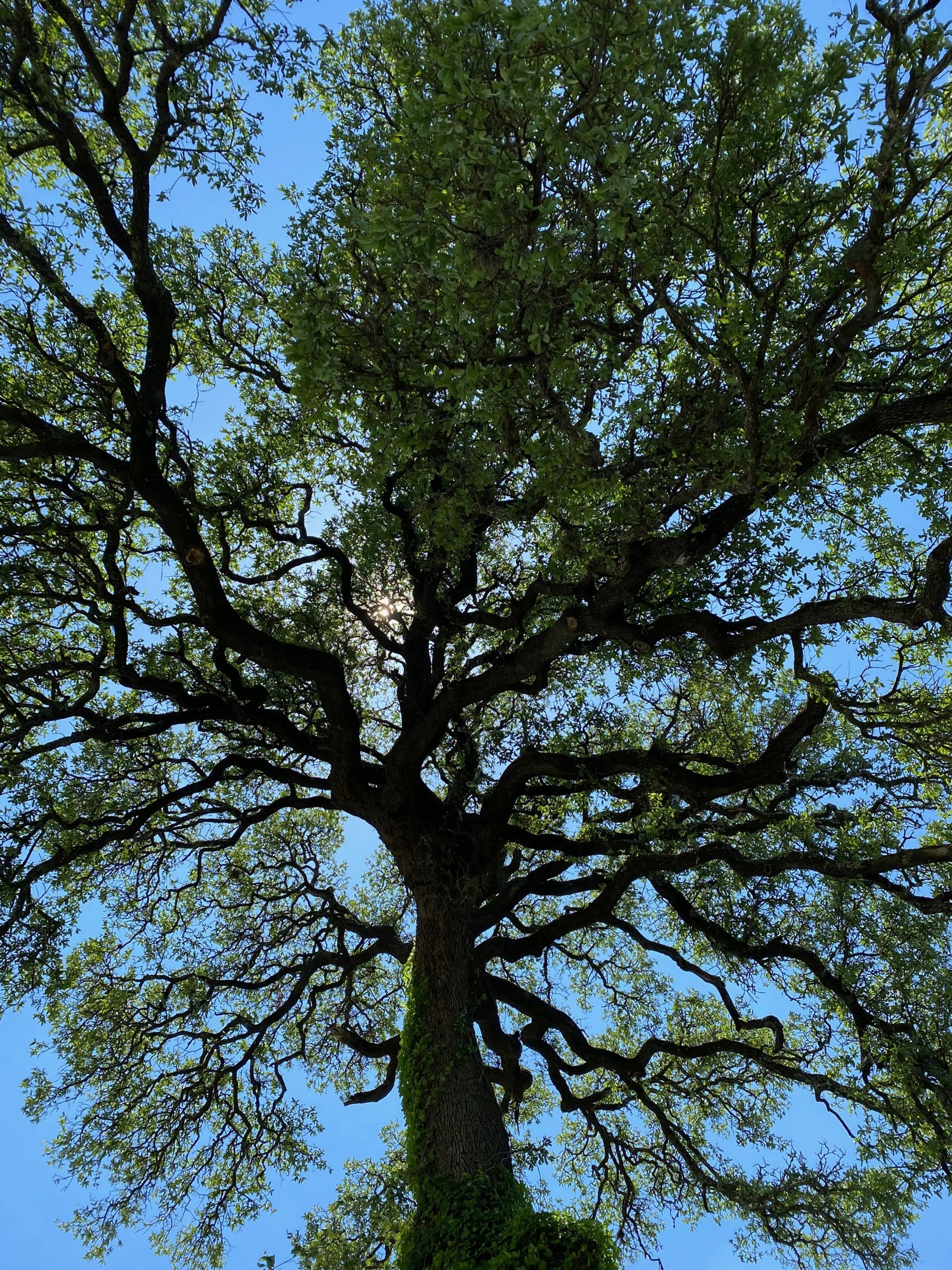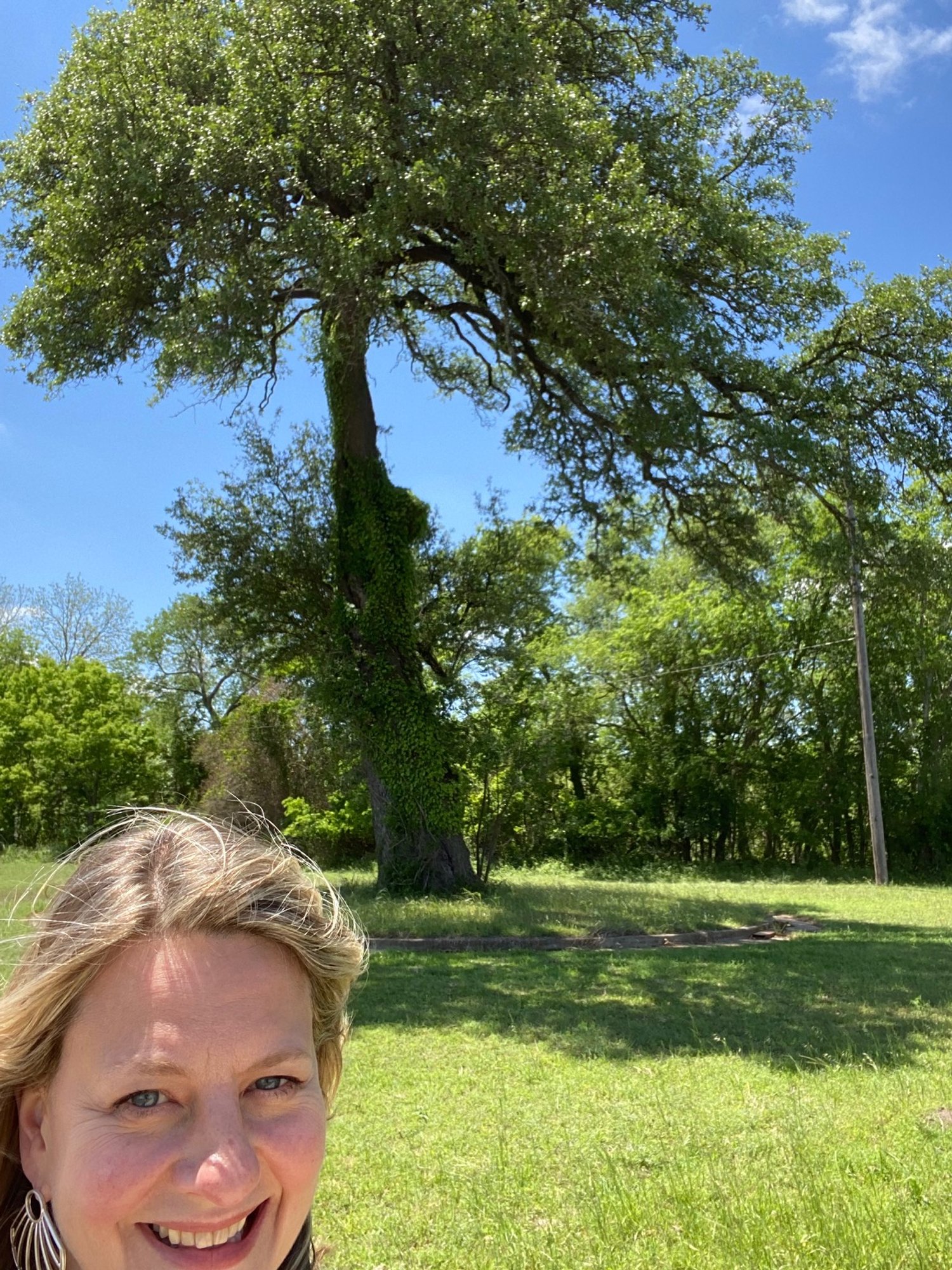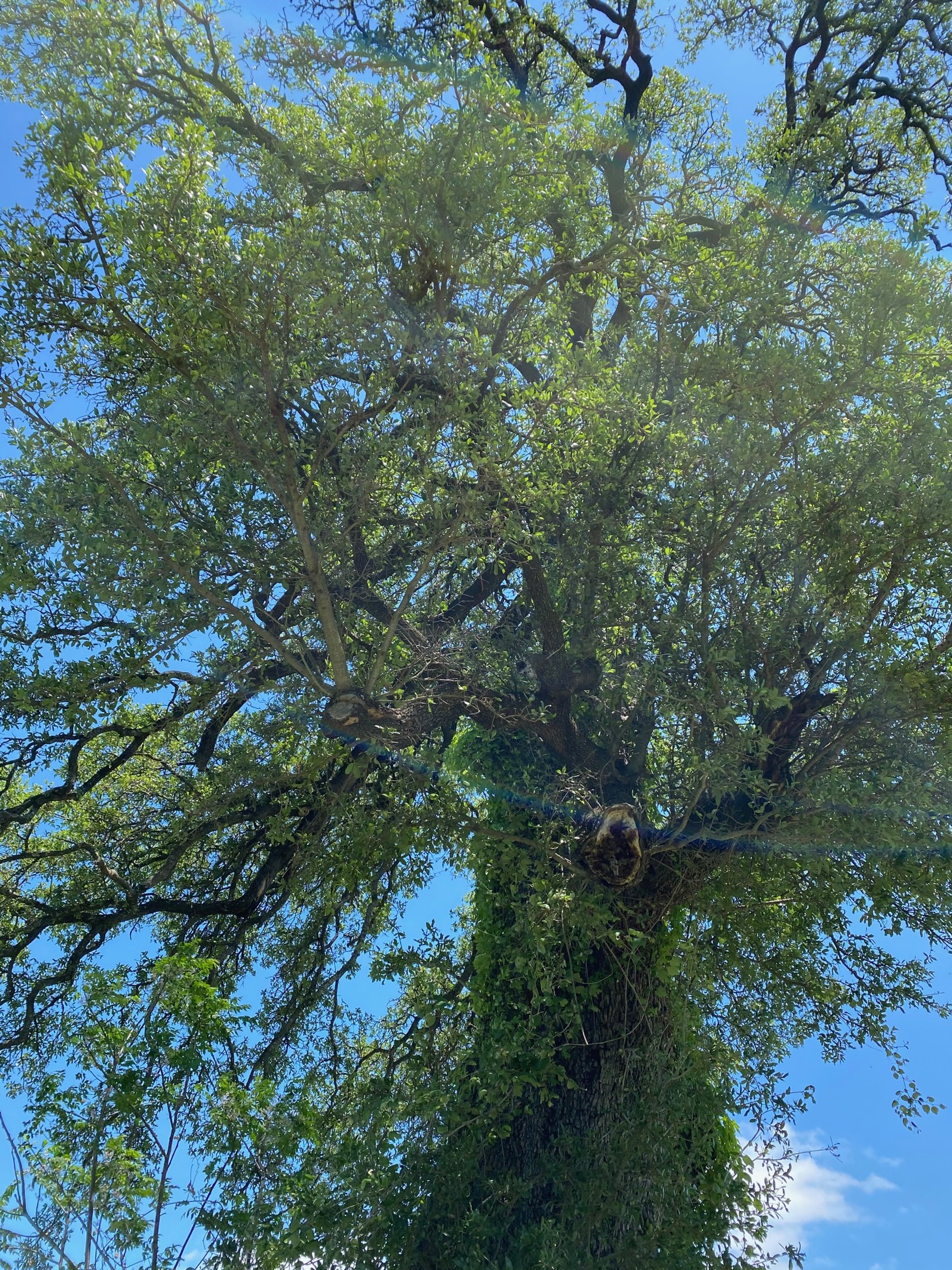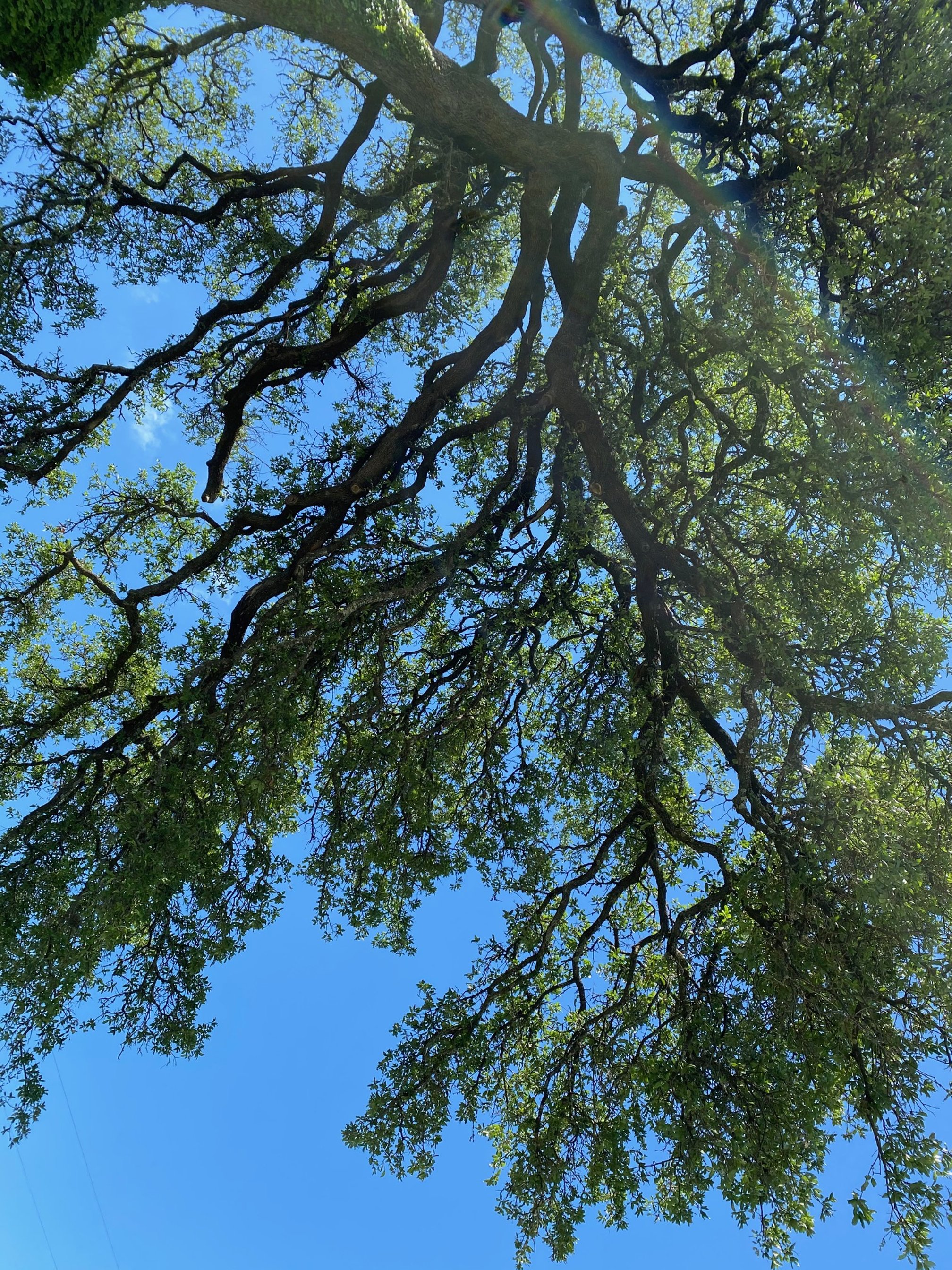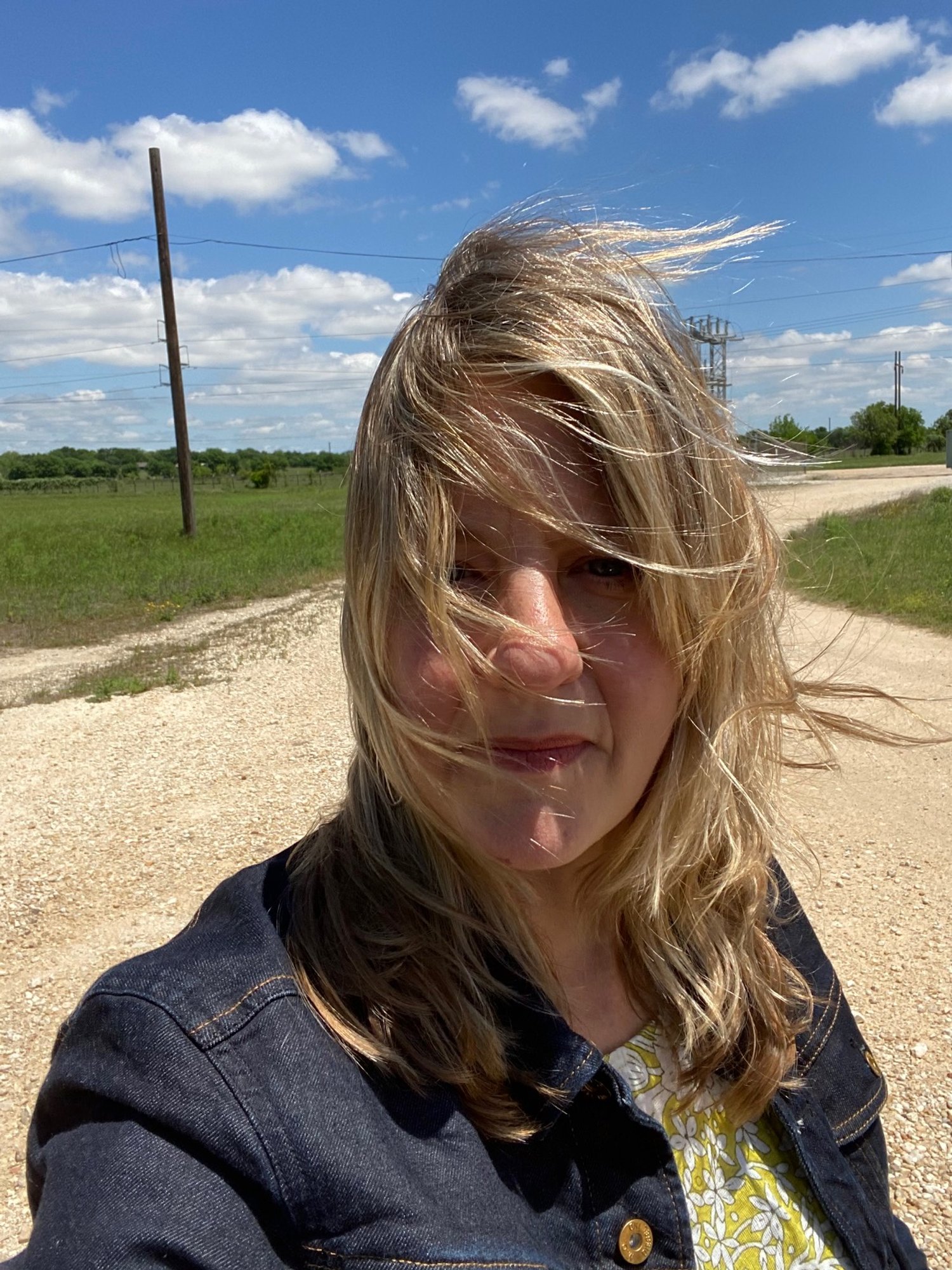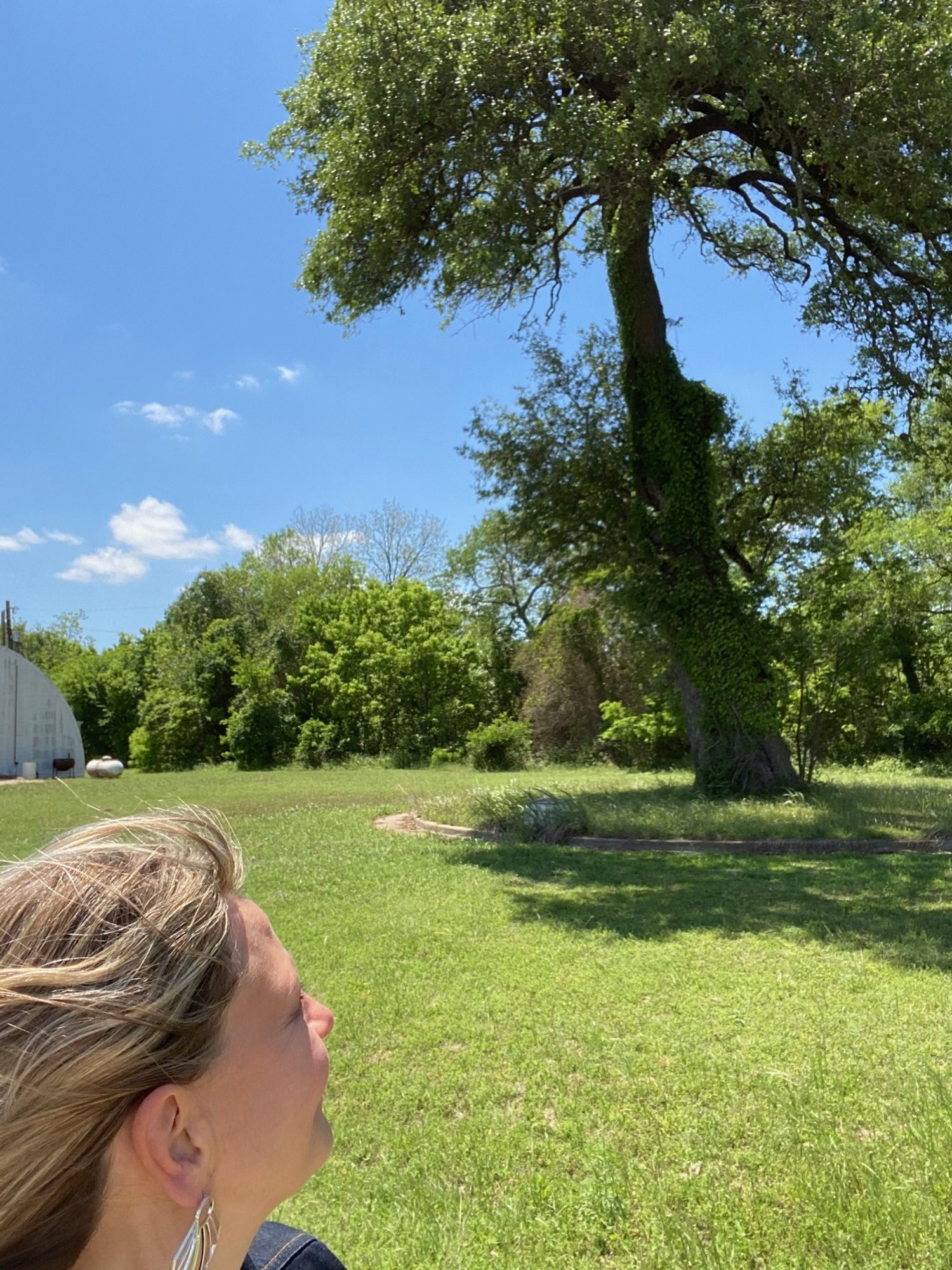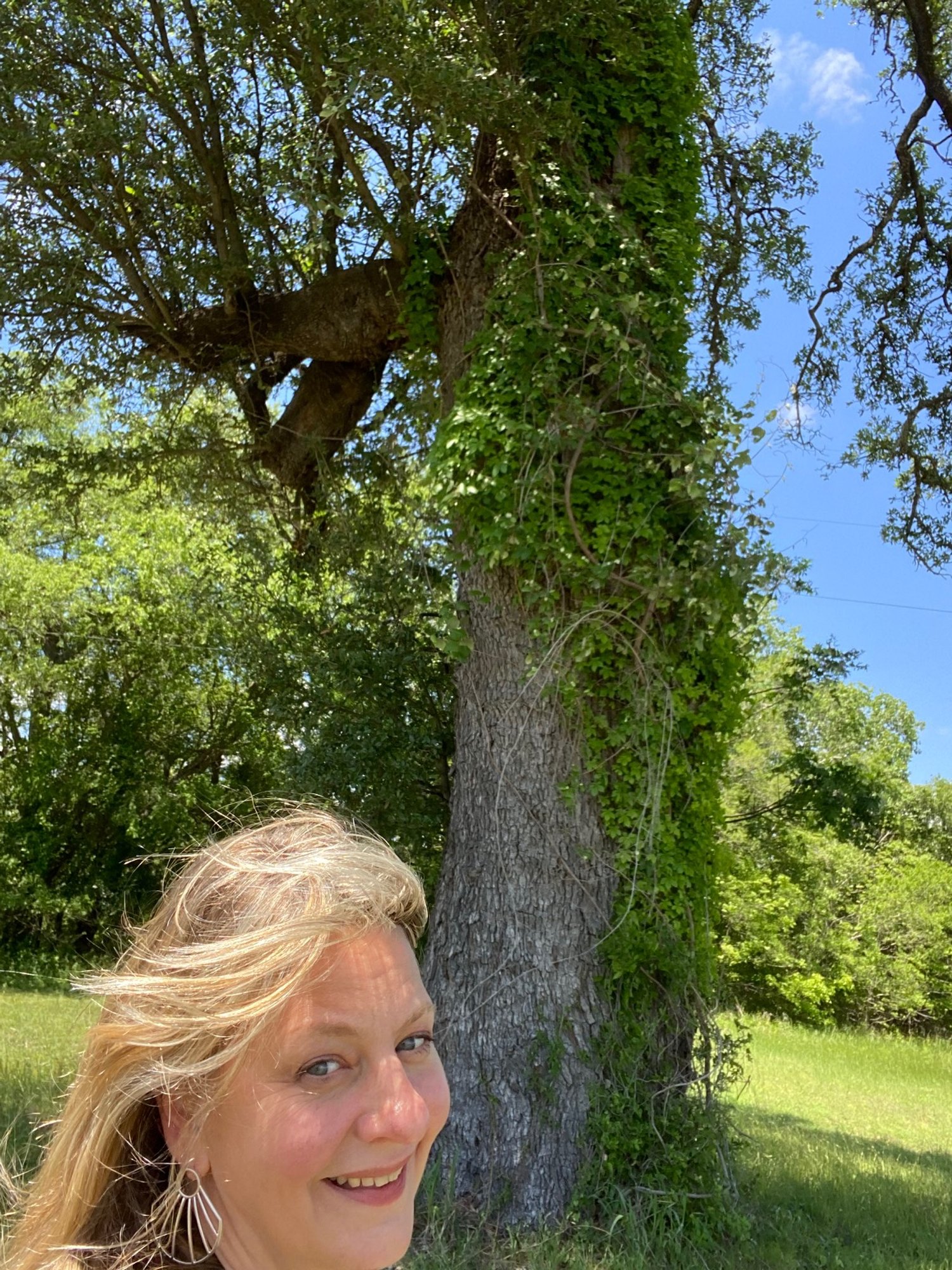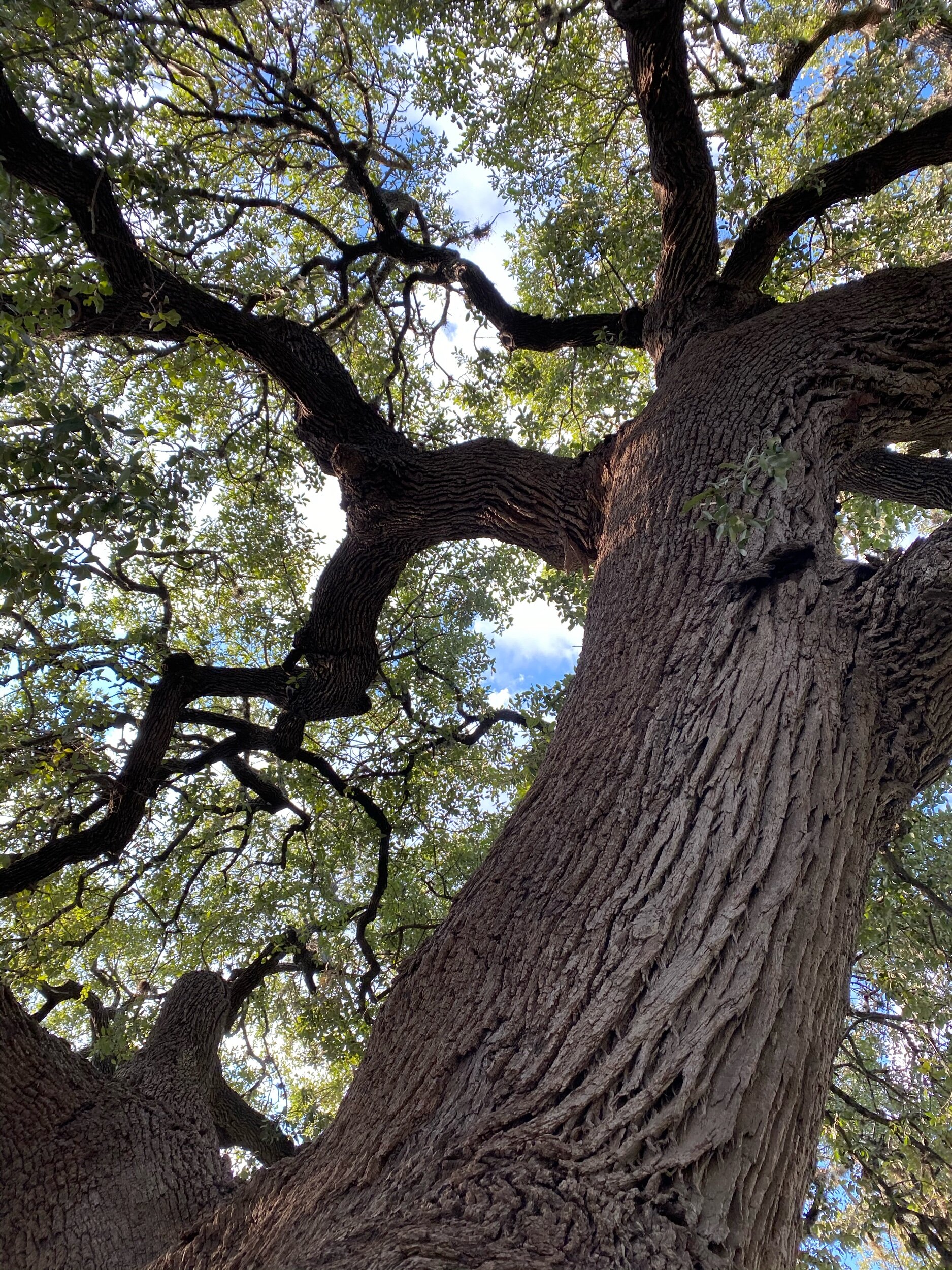
Hubbard Ginkgo
The City of Tyler could use a horticultural consultant
One of the few specimens on my list that is not a Live Oak,
this was a highly anticipated visit, which serendipitously occurred just as its beautiful, yellow leaves were starting to turn.
For years, I have been trying to properly time this visit, so as to glimpse the fantastic golden display for which ginkgoes are known. It just so happened that my teenage son August, who loves collecting musical instruments, had found a low cost offering from an online marketplace in a small town southwest of Tyler in the autumn.
We agreed on a little road trip to pick up an inexpensive drum set, with the stipulation that, after he got what he wanted, I would get to visit my ginkgo.
This plan went slightly south when we arrived in Frankston and he realized that the seller with the “great deal” had not conveyed that he would be unavailable. August was furious that his attempts to communicate had been ignored and completely dismayed that our whole trip been for nothing.
However, all was not lost for me!
My dear, musical teen was not at all pleased when I reminded him of the tree visit, which required an additional trek in the wrong direction. He had already started working a new deal on his phone back in Dallas. He refused to leave the vehicle while I hopped out to document. I was happy to have caught a little bit of the autumn transition.
Confusingly, there are two ginkgos at Tyler City Hall, so I was uncertain as to which one was famously gifted by Japanese Ambassador Richard Bennett Hubbard.
In fact, I’m talking about the wrong tree in the videos.
My first edition hardback entry mentions a scar on the tree. The smaller of the two ginkgoes bore this wound, which appeared as something more like a near-death experience, caused by a lightning strike sometime before 1970, when the original edition was published. Other branches are broken off. Overall, it’s not in good shape.
Stretching for light amongst multiple others, this scrawny tree looks as though it could be nearly hollow in the center. No telling if that’s true, however, because there are sheets of metal riveted together covering the gaping crevice.
Who thought that was a good idea?
OMG I hate metal edging. Particularly in a tiny circle around trees. WHY??? Humans don’t control nature.
The City Hall of Tyler could use a horticultural consultant.
Is that a fucking invasive PRIVET sprouting from the base of a so-called FAMOUS tree??? (I believe its a yaupon holly Ilex vomitoria).
I can’t with this.
Checking the books after returning home, I surmised that the pitiful smaller tree was indeed, the more “famous” of the two. I guess the other one is like a backup plan? SMH
The 2015 update included just one unflattering photo of the sheet metal becoming absorbed by the tree trunk, referring to it as a “living fossil.”
Barely :/
Not exactly awe inspiring, with an ugly water utilities building behind it, the other tree is larger. At least it has plenty of room for its branches to spread.
With the impatient kid waiting, this was a quickie. Noting my photo time stamps, I spent more minutes writing this post than I did seeing the trees.
Kiddo and I circled the city square in Tyler before high-tailing it back to Dallas, where we picked up a $50 drum set from a kinder and more communicative seller, not fifteen minutes from our home. I felt grateful, not only for the long-awaited viewing, but that he gained some valuable wheeling and dealing experience.
This unusual tree with its fan-shaped leaves is located near the southeast corner of the City Hall lawn, in Tyler.
Ranger Oaks
Not gonna lie. When I saw these two scraggly oaks, I was disappointed.
Not gonna lie. When I saw these two scraggly oaks, I was disappointed.
Finding historic oaks that look forgotten, declining, and degraded by municipal structure is downright depressing.
Other notable oak siblings, with their roots squelched into oblong cement shapes, stood in the vicinity on the first cool weekend of October.
Before it was a parking lot…
this area of downtown Seguin was a whole grove of trees under which the Gonzales Rangers — precursor of the Texas Rangers — took shelter circa 1828.
The historical marker describes a disturbing firing line massacre…
of Indians and other “renegades” shot so their bodies fell into the trench they were forced to dig themselves beforehand, which “saved some of the trouble of the burial.”
Great imagery. Thanks
Glad we got that engraved on a sign for posterity.
I’ll go ahead and admit that it didn’t even occur to me
while we were standing there, that the cement and asphalt I was fussing about covers the mass grave that the marker details. Recounted in devastating detail from a different perspective, this article names Ranger James Callahan from the celebratory plaque, which was appallingly placed there as late as 2010.
Looking into it later led me down a rabbit hole which included this podcast about the dark chapters in the history of the Texas Rangers.
On a more uplifting note, an impressive larger specimen caught our eye, catty corner from where we parked, so my friend, former co-worker, Texas Master Naturalist and fellow horticulturist, Sandi and I criss-crossed right on over to the Emmanuel Lutheran campus to get a look.
Now that’s more like it!
THIS is what keeps me driving around Texas: hoping I find a beautiful, mature giant that inspires awe and connects me to something greater than myself.
photo by Sandi Holmes
Who doesn’t LOVE a big ol’ tree with a satisfying trunk you can’t even get your arms around?
I mean, the city of Seguin paved up to the trunks of these old oaks, so… I don’t know
This photo accidentally captured the angle of the oaks shown in the first edition Famous Trees of Texas book
The Ranger Oaks are located at the southeast corner of Gonzales and Travis Streets, in Seguin.
Relevant links
Refusing to Forget is a multifaceted project that seeks to incite public conversations through efforts such as: museum and online exhibits, historical marker unveilings, lectures, and curricular materials for public school teachers. The story of Rangers executing unnamed men who had escaped slavery in March 1839 is linked from their site
Produced by Texas Monthly, the podcast White Hats tells the story of one of Texas’s defining symbols.
McNay Art Museum, in San Antonio has a drawing of oaks in Seguin from 1848
Many thanks to Brenda Biggerstaff-Sanchez for research assistance 🩷
Arbor Day 2022
For Arbor Day 2022, I was honored to give a talk about my Return to the Famous Trees of Texas project at Russell Farm Art Center
My little talk and little screen
After seeing my tree posts on facebook, my college art professor Tom Sale invited me to speak at Russell Farm for the day honoring trees.
Technical difficulties threatened to ruin the whole thing - I couldn’t get my presentation to load on the larger tv screen they provided. After numerous attempts, I gave up and showed the small group my laptop while I riffed on my arborilogical adventures. It turned out fine and I gained understanding of how to better prepare.
When I know my subject, I enjoy public speaking. This felt like talking with friends.
It was a great day.
Artist and Educator Tom Sale
Artist Renata Lucia spoke before me
Me with the octogenarian matriarch of Russell Farm
Y’all come see me do a talk about my tree project for Arbor Day!
Saturday April 30, 2022 at Russell Farm Art Center
Free event — Rain or shine
Bird watching 8 or 9 am. Tree walk 10 am.
Art talk with Tom Sale and Renata Lucia 11am.
Me at 11:45 am
Russell Farm Art Center
405 W County Rd 714, Burleson, TX 76028, an hr from Dallas, less than 30 minutes from Ft Worth.
AppleSauced Podcast
I met enough prerequisites to be a guest on this non-tree related podcast
Texas Trees on a podcast
I was honored to join my college (UNT) friend Michael Alves along with his buddies James Munton and Clay Wheeler on their show called
Apple Sauced: Fascinating conversations about technology, life and beer, which they’ve hosted for 101 episodes.
Trees have nothing to do with technology, but they are a fascinating part of life and I like beer, so I met enough prerequisites to be a guest. We had a great time sharing brews and talking about our lives.
When we recorded this episode, I had just seen the Twin Oaks so that story was top of mind. Hopefully I don’t sound like an idiot. I have never had the heart to listen back over it. I prefer to keep my memory of the enjoyable experience.
Bell County Charter Oak
Under this damaged live oak, now overlooking a power center, the first election was held in 1850 to organize the new Bell County
The old description mentions the Leon River, which I never saw. And private property, which I also knew nothing about until much later.
I believe I acted pretty respectfully. It seemed more or less public. When I drove up the gravel road using google coordinates, a bunch of softball players gathered near a backstop stared at my vehicle as I headed over near a power station thing — what are those called? —where I could see the oak from a distance.
Now within an electric cooperative enclosure, this tree can be viewed from Charter Oak Drive on the east bank of the Leon River, in Belton, TX.
The 2015 edition of the Famous Trees of Texas has updated location information not available on the FToT website.
Even though it can damage tree roots, people seem to desire a ring of concrete around an “official tree.”
It’s obvious from the pictures that a strong wind was blowing. This was a quick visit. I snapped photos and high-tailed it out of there.
Twin Oaks
Would you trespass to get a better look at a tree?
Please respect private property when viewing these trees.
Sitting in my car with the window down and my mind racing, I stared at the little fence in front of the house. I had driven two hours to get here, but was just grasping that this was not a public space. This was someone’s home.
Just a few weeks after the crazy Texas winter storm, with record breaking low temperatures that ravaged Texas landscapes, I took off to hunt down the Twin Oaks.
Driving south from Dallas sipping Topo Chico, I savored my Spotify playlist at top volume, appreciating the sense of perspective that comes from getting my eyes on the horizon, moving away from the city weekend traffic. The calming effect is noticeable as the billboards thin out and open spaces, grasslands and occasional groups of animals take their place.
Hamilton County Courthouse
Motoring through the thriving town of Hico (Texans pronounce this high-coe), folks in masks wandered around rejuvenated buildings, restaurants and antique stores. Not far down the road, my destination: Hamilton, seemed a stark contrast, like a land that time had forgotten.
The word that came to my mind was: dilapidated.
There is a nice court house in the town square, but the other businesses looked faded or closed.
Following GPS through town, I turned and started to enter what looked like a residential driveway.
This can’t be right…??
I pulled over to look up the Famous Trees of Texas web page on my phone, thankful to get a cell signal in the small town.
Ohhhhhh. This one is on private property.
You can deduct the amount of planning that occurred beforehand.
With trepidation I drove down the long gravel driveway, surrounded by shrubs creating an enclosure, leading to a circular drive in front of an older blue house with white trim. The Twin Oaks were visible, behind a low metal fence. I deliberated whether or not I should go any further.
Should I just stay in my car???
Or could I get close enough to take a few photos? Do I need permission?
Were people watching me from inside the house wondering what the heck I was doing in their driveway?
I considered going up to the door of the house, but after a morning alone and a quiet drive, the idea was unappealing.
I imagined cheerful elderly folks answering the door, “Oh yes! We get visitors all the time wanting to see the old trees.”
Hmmmm Really?
How many people even know they’re here? I know how much I dislike solicitors knocking on my door.
I thought about Noska, the tattoo artist whom I stumbled upon, in a wild coincidence, when trying to locate the tree called Old Baldy south of Austin. He’s hunted these trees for years from the same book. He told me he had spoken to landowners and jumped fences.
At that moment, I felt like he was brave and I was a chickenshit.
I did not want to go up to that door. I was still just sitting there mind-spiraling in my vehicle!
My imagination swerved into another scenario of some confused old woman with a walker chair answering the door, wondering what in the world was some random stranger doing knocking on the door? Musty smells came to mind and images of the nursing homes where I had visited my declining grandmother as a child.
I couldn’t do it.
Knowing that several of these historic trees don’t allow visitors at all, I finally decided that showing respect meant it was best to stay on the outside of the fence. Turning on my phone video and leaving my car running, I anxiously tip-toed over to get a look at the historical markers, nervously whispering to myself. These metal signs seemed to validate the excursion. This place holds significance, instead of being just some half-baked idea in my overthinking head.
This little marker tells the most concise version of possibly the worst Friday night ever.
A guy sets off on a mule to attend a dance in a neighboring town….
That right there just sounds so miserable. All alone, seeking company, with nothing but a mule to reach your goal.
But it went steeply downhill from there.
Wandering along at a mules pace, Indians ambushed him. He tried using the animal as protection from their arrows, but alone and outnumbered, he didn’t stand much of a chance, nor did the mule, whose wounds were mortal. Running to the Twin Oaks for cover, the story claims he wounded the chief with his rifle, scattering the the others, but he barely survived. An arrow was removed from his spine, then he died a few weeks later.
The first edition book includes a rambling account of how some little girls discovered him and how other men went out to avenge his death, to no avail. Dropped in the 2015 version, the emphasis is placed squarely on the bravery of the white man against the savages. In fact, the reason this whole incident was considered historically important, was that he was the last man killed by Indians in Hamilton county.
This tale is told with a clear bias.
In 1970, when this account was published, you might hope that perhaps we’d have begun to acknowledge the deep complications inherent in U.S. history with native Americans, but the tone, like several others in the book, was more akin to an old cowboy movie.
Since their name sounds like that of an apartment complex, the title Siamese Twin Oaks might’ve been a more descriptive one for these live oaks, whose conjoined trunks sprouted in two directions from the same spot, typical of the genus.
You can see from the book photos that they used to look more alike. The main trunk of one twin was recently chopped off leaving a long, leaning stump with some scraggly branches sprouting along the edge of the cut. The so-called twins no longer resemble each other at all. They looked especially weird since dropping most of their foliage during “Snowmagedon,” as did all live oaks in Texas.
From the limited vantage point outside the fence, I snapped a few photos, but felt a constant tension as though I were trespassing.
The little video I took has the only record of an odd detail which was a complete surprise at the moment: A MULE(!!) standing off in the distance behind barbed wire.
I whispered hello, calling her a donkey. I honestly don’t know the difference.
Was this coincidence???
Now I’m wondering… Wait.
Are these people really into the historic tale behind these oaks? Enough so that they kept a mule as a prop to go along with the account of the guy riding off to the dance??
But the mule was killed!? My racing thoughts backflipped, reconsidering making contact with people in the house.
Why didn’t I get any still photos of the mule/donkey?
As I quickly documented the twins, she started BRAYING quite loudly, snapping me to attention from my internal Spirograph. Sounding like something from a children’s book, or county music sing-along show, it’s really an incredible sound for a city person with very little animal knowledge to experience:
Haawww Hee Hawwww HEE HAAwww!!!
Was she a guard mule? Did she think I might feed her? I hadn’t noticed a group of sheep until then, but they decided the mule was on to something and they started up. BAAAAAAH! MEHHHHH!
This certainly seemed like my cue to leave, but I felt so stupid just taking off after being there only a few minutes. Whyyyyyy do I ALWAYS feel like I’m doing it wrong? This is not an assignment. Its MY project!! It’s ok to leave.
Except it’s a let-down. There’s all this anticipation, mapping, forcing myself out the door on a lazy Saturday, realizing I have to get things checked on my car before I can go, driving two hours… I finally get here and it’s downright awkward.
But I did it. I hadn’t visited a tree since my birthday, so I kinda got back on the mule, so to speak.
Driving away, my brain tingling with adrenaline, everything seemed vaguely interesting and I wasn’t ready for the adventure to be over. Wandering the town roads, I spotted a magnificent Redbud (Cercis canadensis) in full bloom. On this gloomy day in mid March, it called out to be photographed. With the rest of the landscape so trashed by the storm, its dazzling colors stood out as the only thing of beauty in the vicinity. Tiny flowers covered the leafless branches splaying out in all directions.
The built up mental pressure lifted and I noticed how much more relaxed I felt shooting this tree without the nerve-wracking discomfort of being watched.
Coming down from self inflicted stress, I stopped again to shoot two leafless, but statuesque live oaks near a small cemetery. They appeared older and more twin-like than the Twin Oaks. Almost every area where a tree might have a name or documentation, there are stately anonymous cousins nearby.
After that, I turned and headed back up the main road towards the highway.










